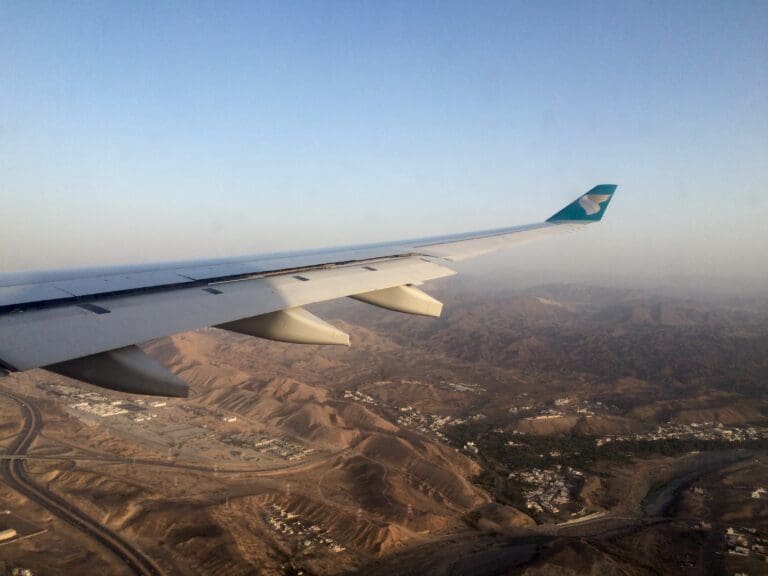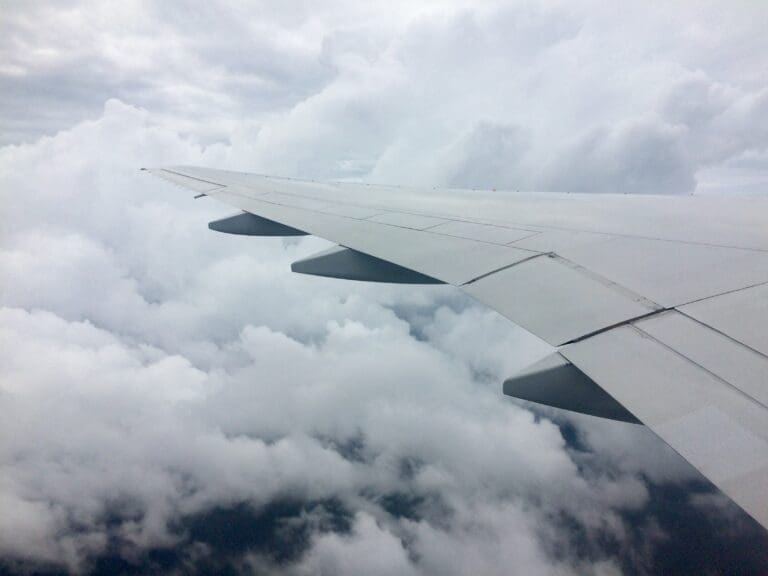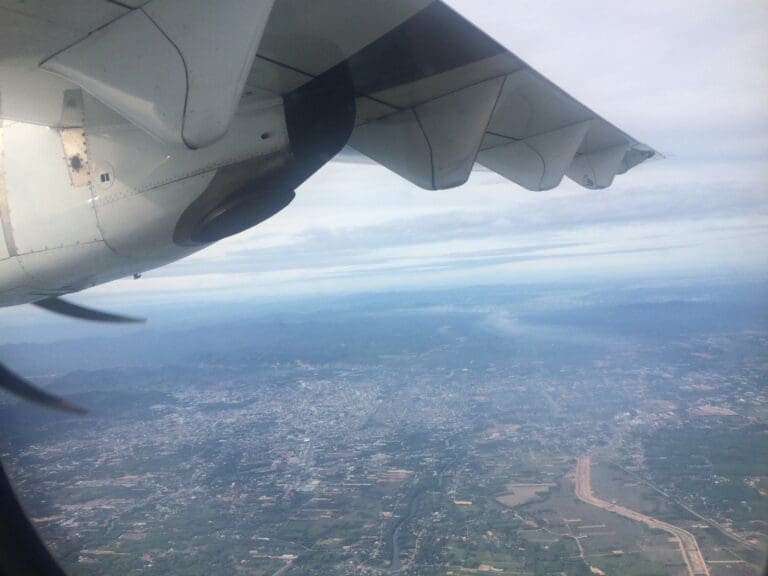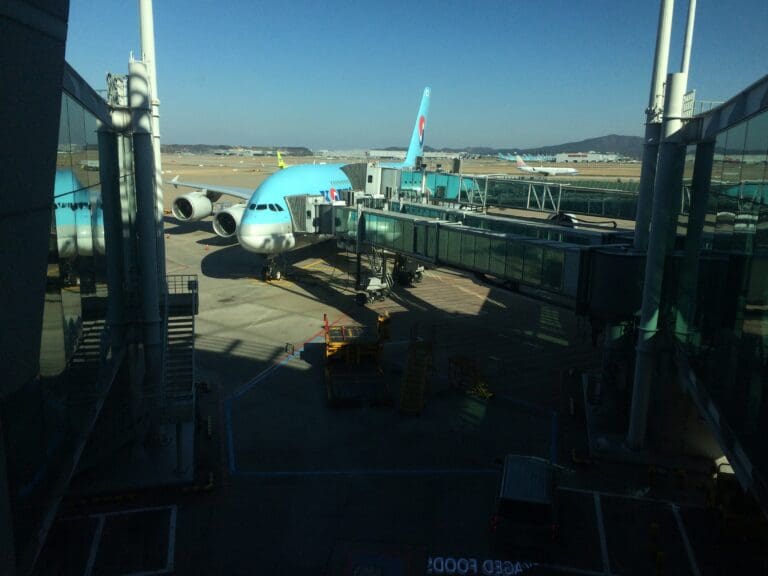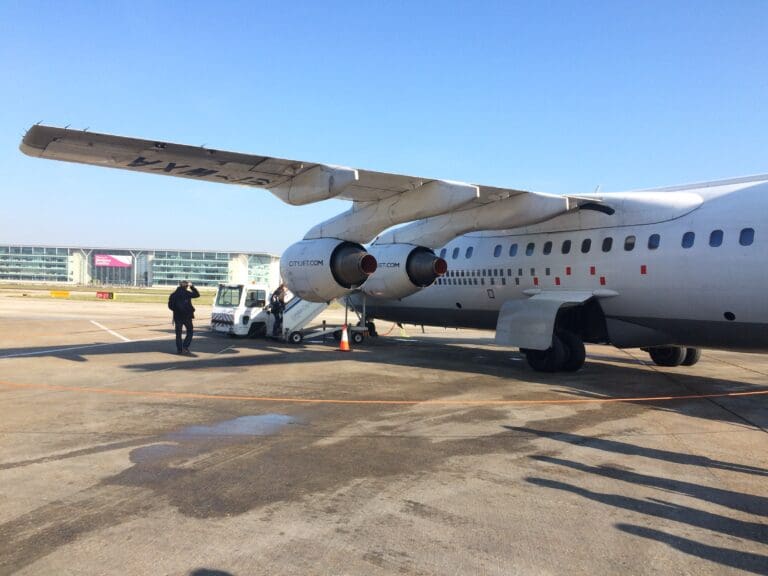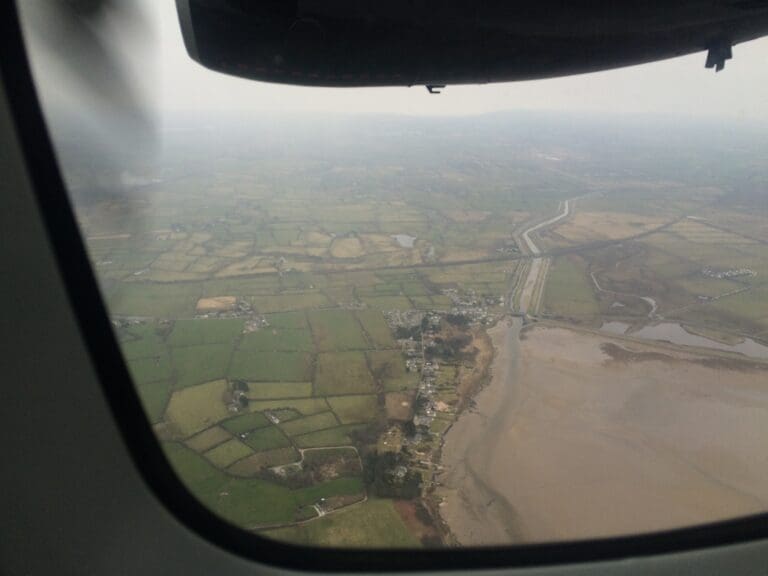KLM Cityhopper’s Fokker 100 Revival: Amsterdam to Birmingham with Carpatair
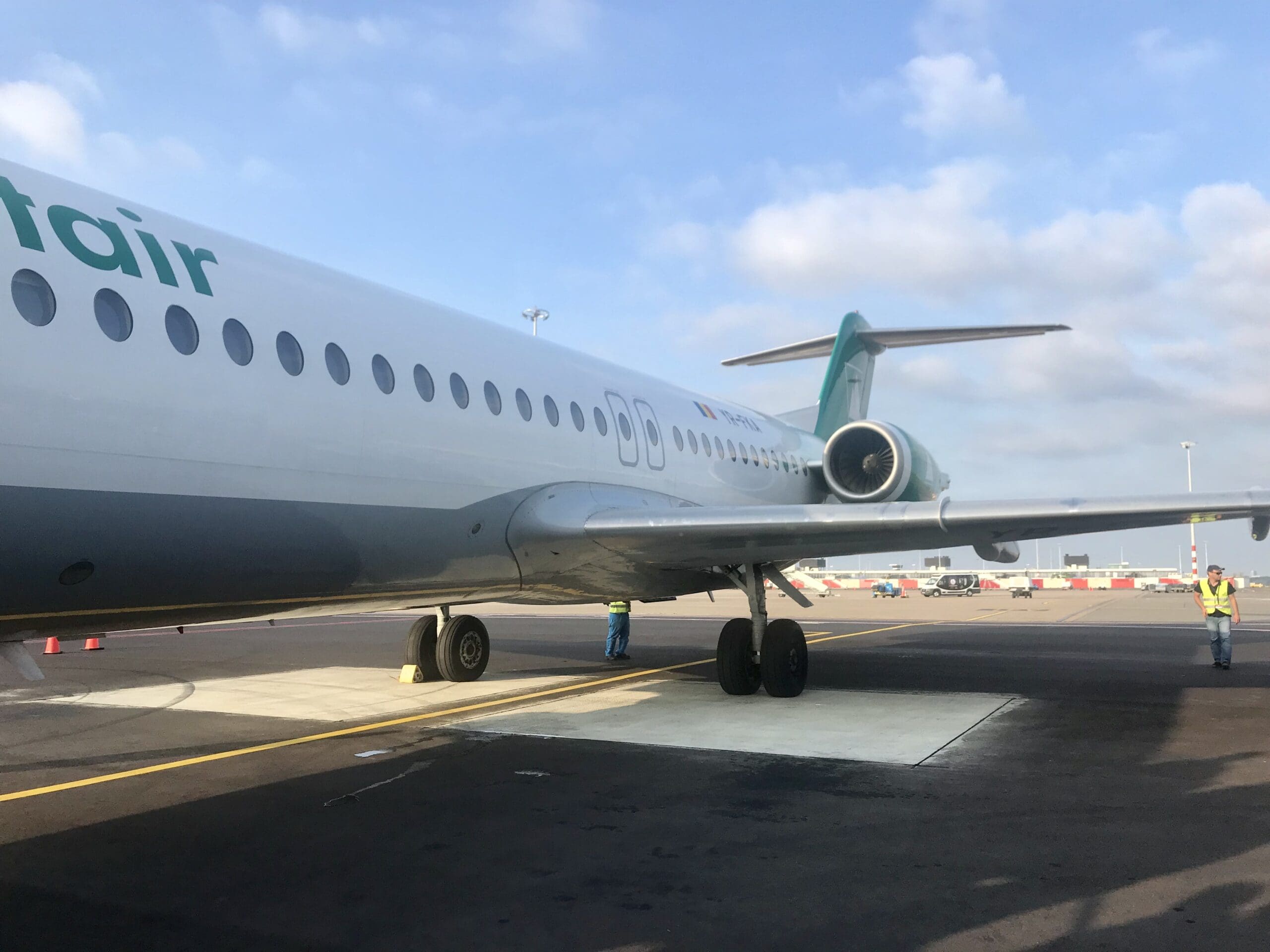
Background
Once upon a not-too-distant time, the regional subsidiary of Dutch giant KLM, KLM Cityhopper operated a fleet that exclusively consisted of locally manufactured Fokker airliners. However, the monopoly of Fokker within KLM Cityhopper’s fleet came to an end with the commencement of the airline’s fleet renewal programme in 2008. This would see the airline transform from an all-Fokker to an all-Embraer operator, leading to their Fokker 50s, Fokker 70s and Fokker 100s being retired in 2010, 2017 and 2012 respectively. Whilst I had managed to bag a ride on a KLM Cityhopper Fokker 70 in 2016, I had missed out on the other types, and as of 2018, flying onboard a Fokker airliner in 2018 was a little difficult, especially considering that I was living in the UK.
However, all was not completely lost and like many enthusiasts, in April 2018 I was delighted to hear that KLM Cityhopper would wet-lease a rare Fokker 100 from Romanian carrier Carpatair that summer to ensure that the airline had enough capacity to meet demand during the peak summer months. This would operate from Amsterdam to Birmingham, Copenhagen, Edinburgh, Frankfurt, Hamburg, Montpellier and Warsaw, and thus, as a UK-based enthusiast, it would not prove too difficult to bag a ride on the rare Fokker 100.
Needing to spend several days in Frankfurt in August 2018, I decided to work the Fokker 100 into my return journey to the UK. Whilst I had initially looked up flights from Frankfurt to Birmingham via Amsterdam, these proved to be rather expensive. I thus decided to travel the first portion of the journey from Frankfurt to Schiphol via train, making changes in Dusseldorf and Venlo before catching the 1855 flight over the North Sea to Birmingham.
The Journey
Amongst Brits, Germany holds a reputation for being a country of punctuality. However, as my locomotive-hauled InterCity train emerged from Frankfurt Main Station, commencing its long journey to Westerland eleven minutes behind schedule, the service appeared to mimic the typical on time performance of one back home. With a short connection in Dusseldorf, any further delay would see me miss my onward train to the Dutch city of Venlo from where I would then catch a direct train to Schiphol Airport. Whilst the train’s comfort combined with the scenic views of castles and barges along the Rhine Valley served to distract me from the frequent signal stops the train made as it headed north, it soon became obvious that I would miss my connection. Fortunately, with trains to Venlo running hourly, this was no major disaster and instead allowed for a short exploration of the area around Dusseldorf Station. From Dusseldorf things went a little more smoothly as I traversed through the German countryside at a leisurely pace before making a quick sprint to catch the next NS Intercity service bound for Amsterdam. Fortunately, I caught this and thus arrived at the airport’s conveniently located station just over an hour later than scheduled, almost eight hours after leaving Frankfurt.
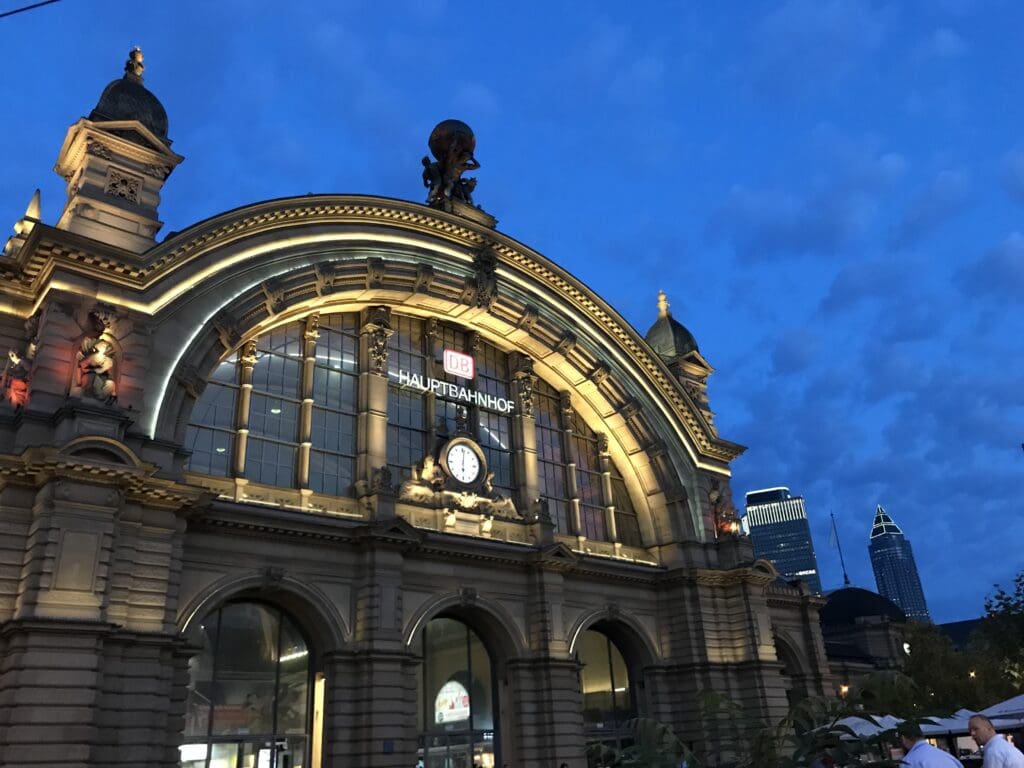
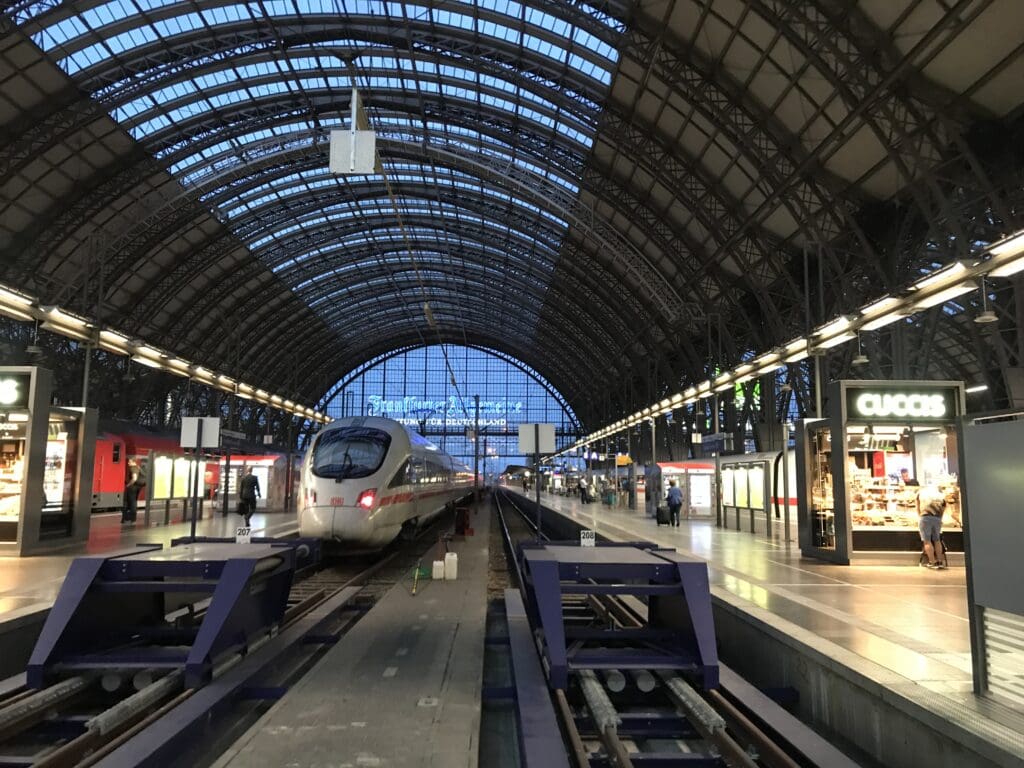
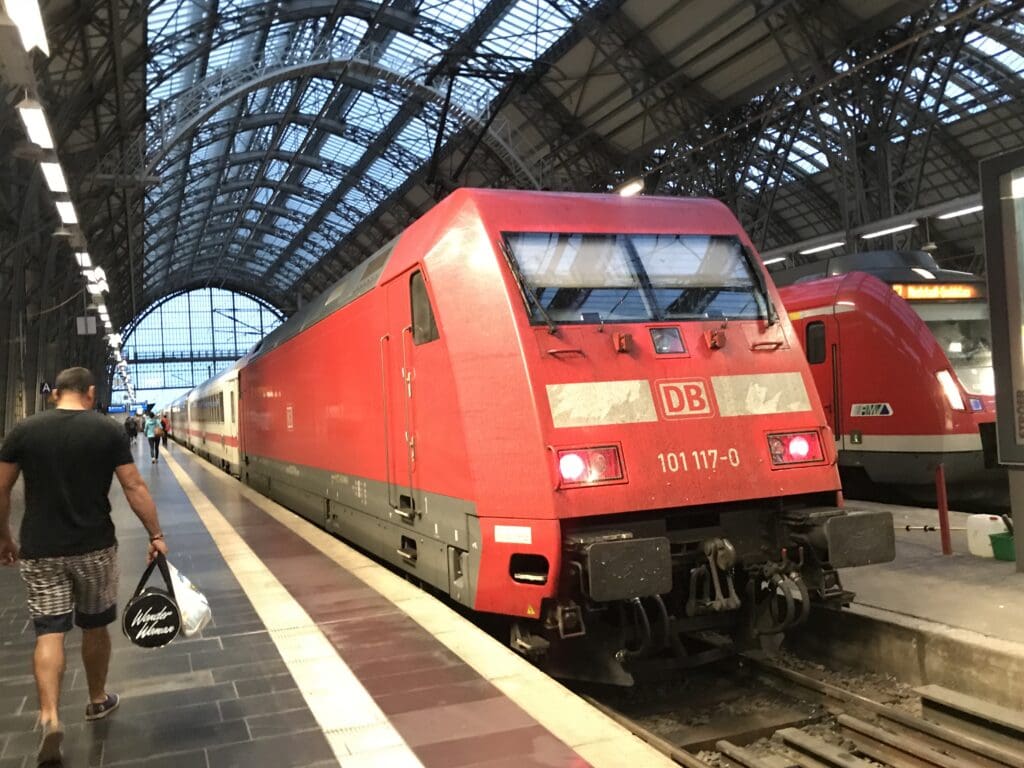
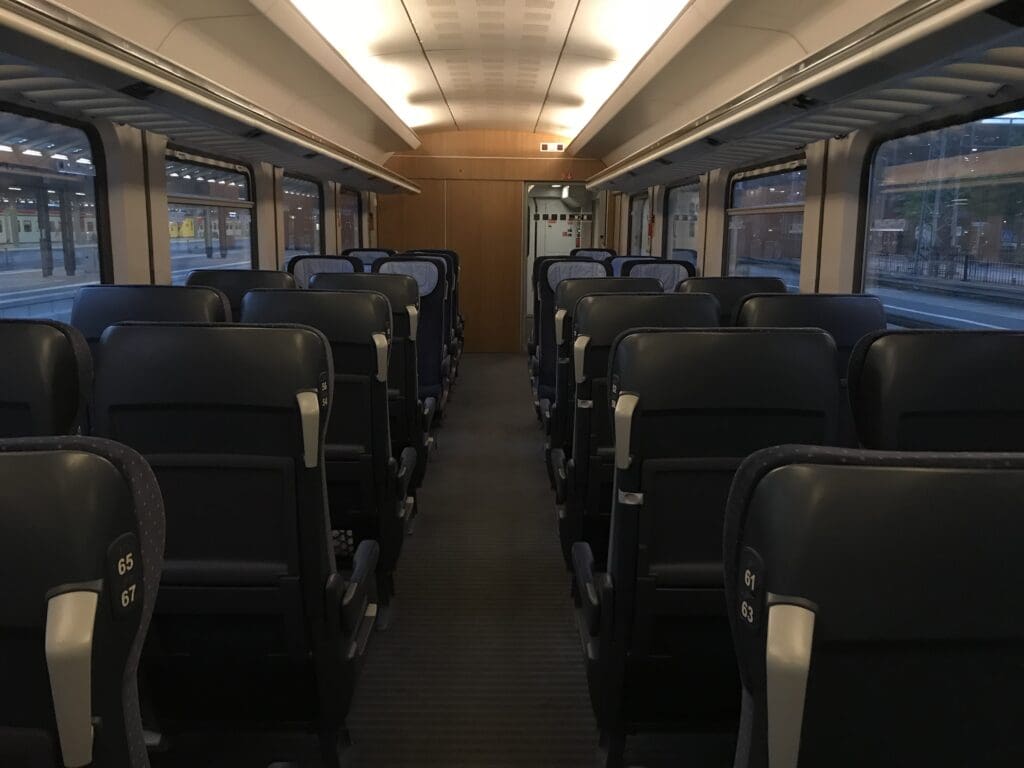
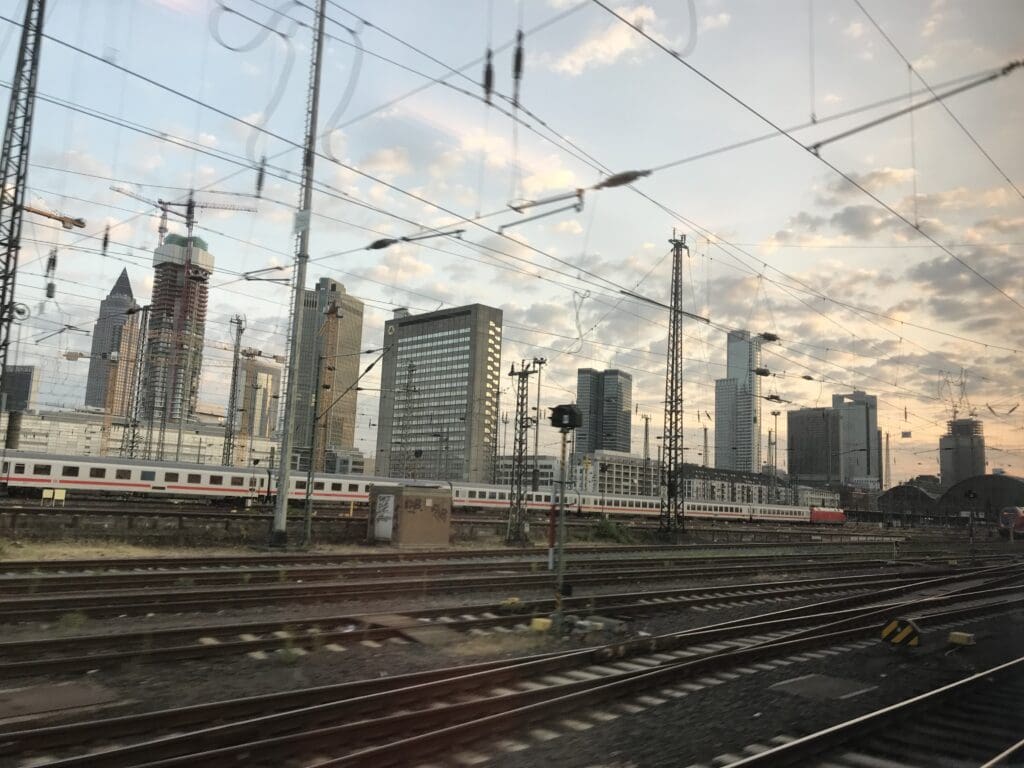
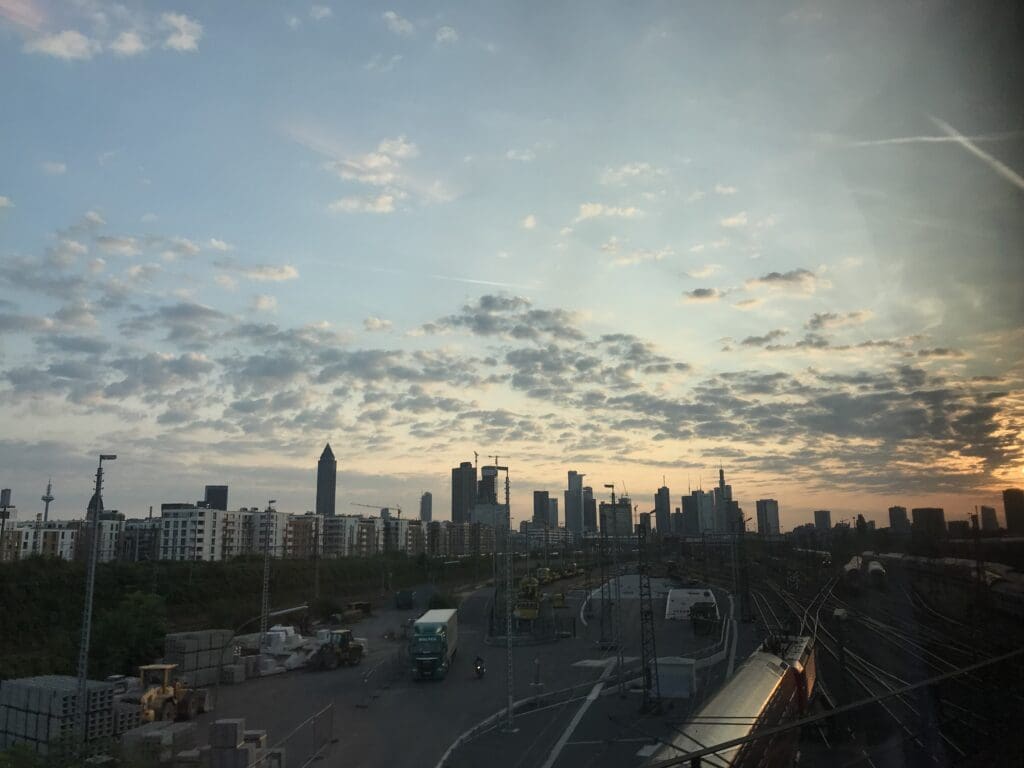
Having allocated myself almost six hours at Schiphol Airport – a combination of my desire to select the cheapest train tickets and spend some time spotting on the airport’s perimeter, my late arrival was of no major concern. However, after arriving in the terminal, I decided to abandon my plan of hiring a bike and instead made use of the terminal’s observation deck, located on the roof above the landside area and accessible to all. Offering panoramic views of several of the airport’s ramps and runways, this is a very welcome addition to the airport and one that is unfortunately rare in many parts of the world. Being a warm summer afternoon, the observation deck was completely packed with many families lining the railings as aircraft pulled into and were pushed back from the stands beneath this Being a convenient and free facility, I can hardly complain about this however perhaps a more seasoned spotter may complain that the position of the sun that afternoon made good quality photography difficult. Since my previous visit to the observation deck in 2007, PH-OFE, a former KLM Cityhopper Fokker 100 has been added to this, having been hoisted onto the roof and was proving to be a popular exhibit that day. I found looking around this jet to be particularly interesting given the fact that I would depart on such a museum-piece aircraft several hours later! After a relaxing time spent soaking up the sunshine whilst observing the constant stream of movements, I decided to head back into the terminal in preparation for my flight.
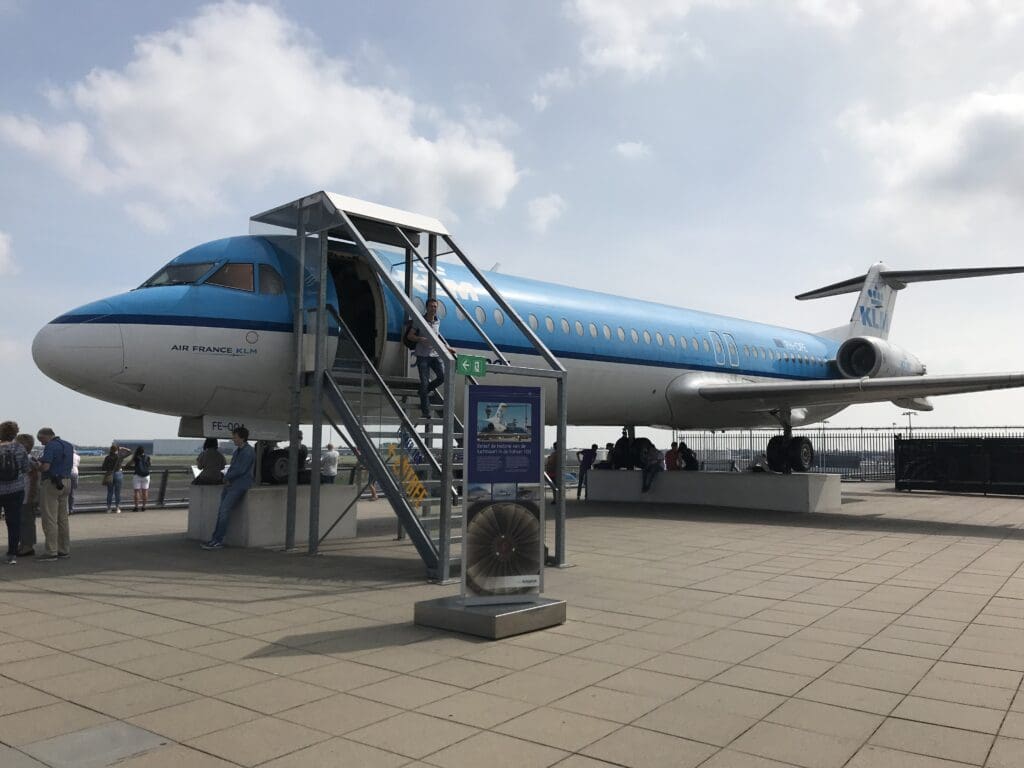
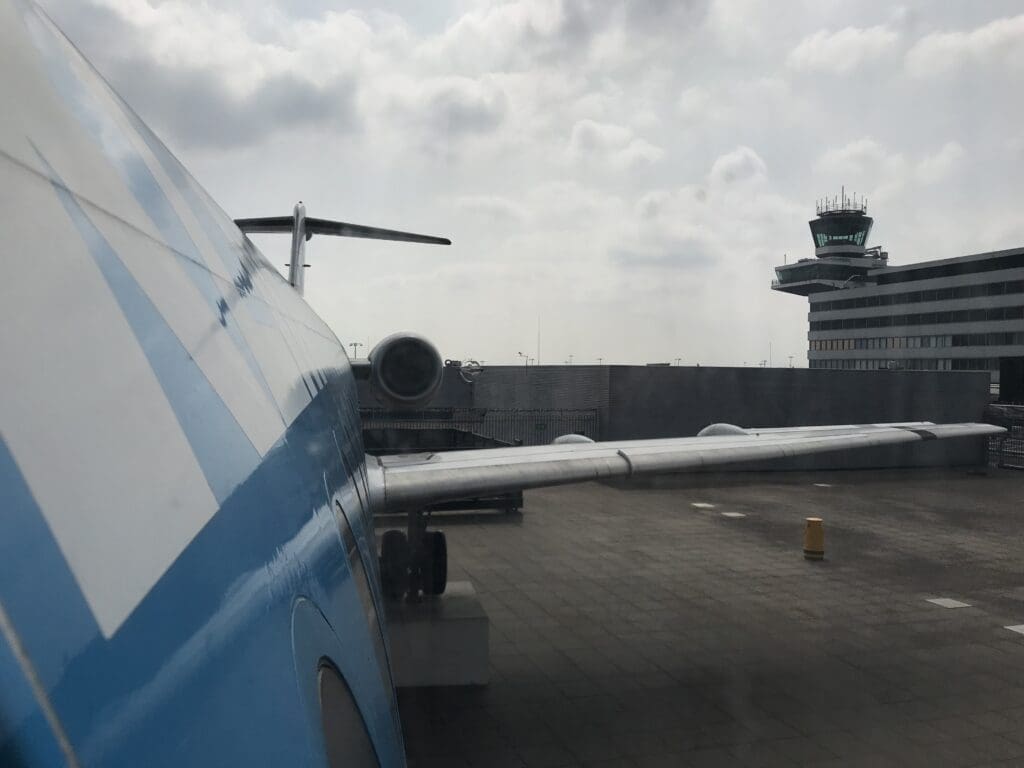
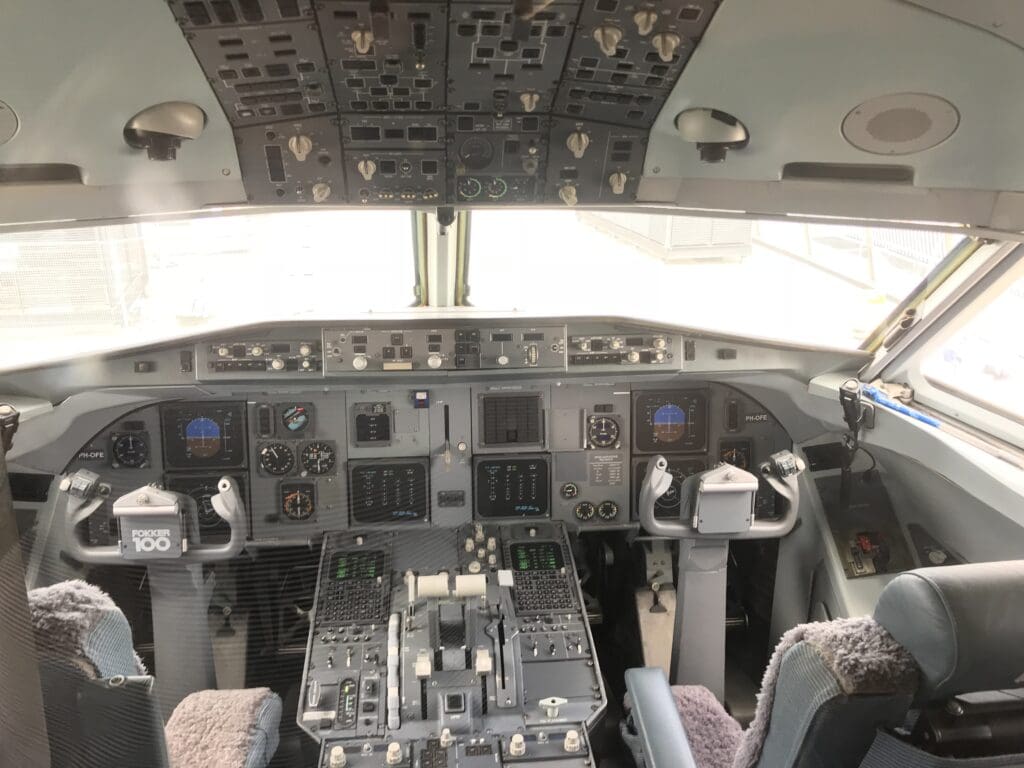
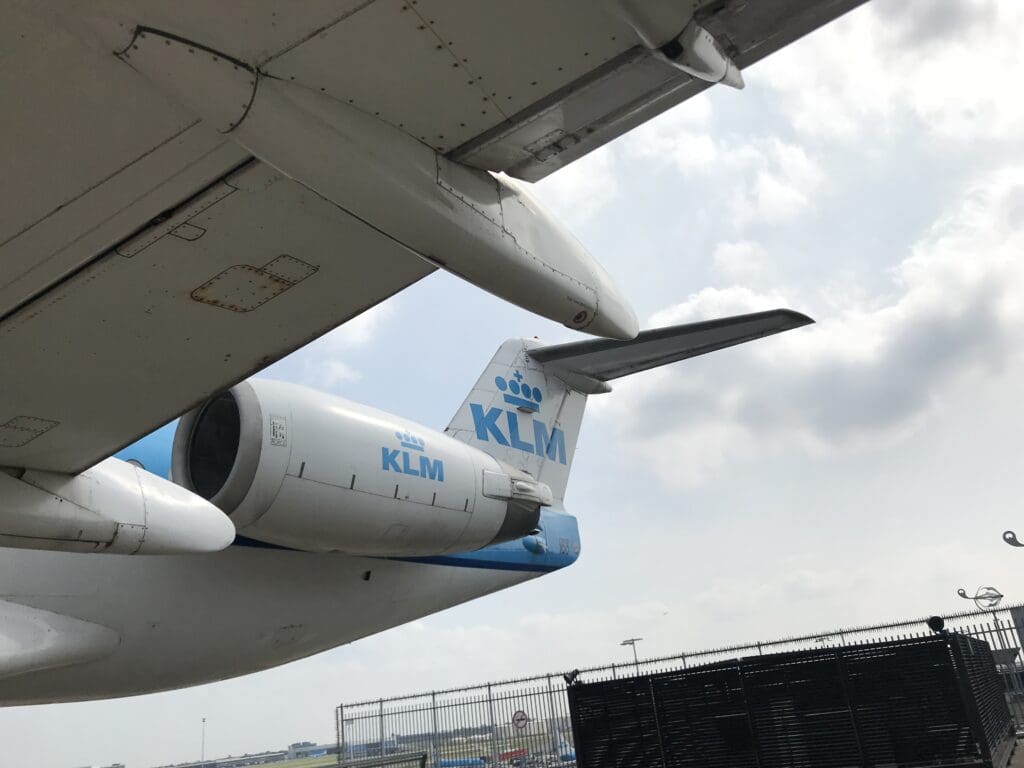
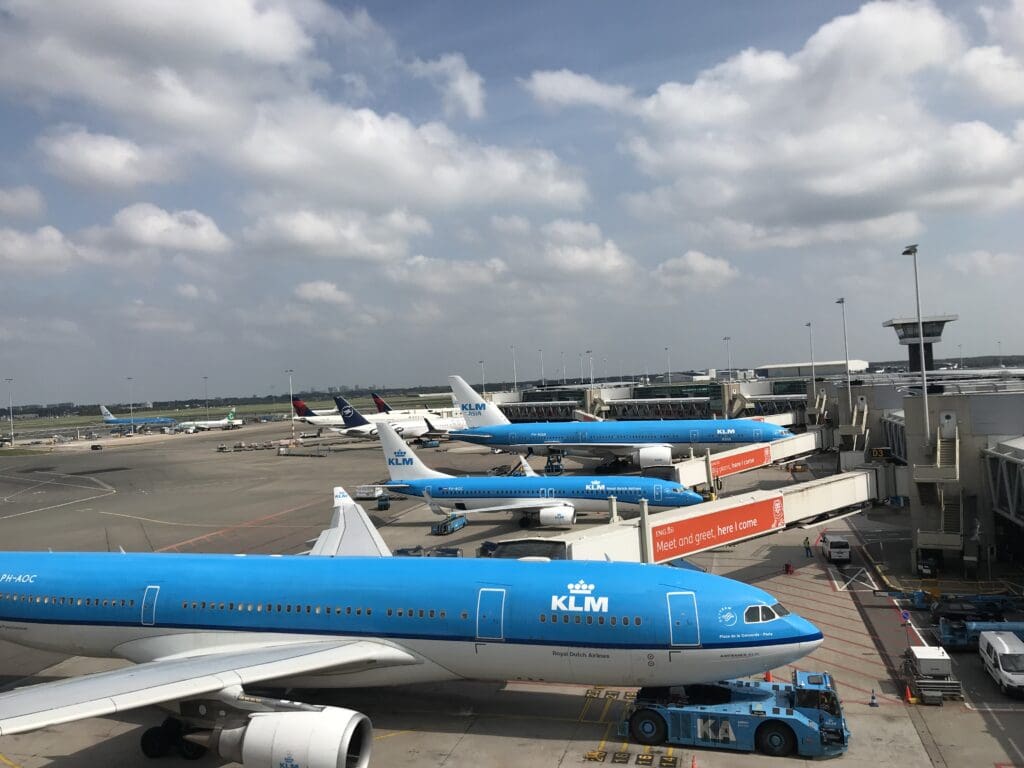
Whilst the airport’s convenience may have left a good impression on me, unfortunately, the check-in area seemed to be a little old fashioned, scruffy and uninviting. The area’s low ceilings and dull colours appeared to be far more reminiscent of a small regional airport rather than a global hub, home of one of the world’s largest airlines. However, of course, I do realise that unless you are willing to embark on the incredibly costly and arduous task of building a new terminal, airlines have little choice but to work within the confines of the area that they occupy. Enjoying a large dedicated check in area which was tastefully decorated and stocked with an abundance of self check-in machines, KLM appeared to have been doing this rather well in respect. Having already checked in online and with no luggage, my sole reason for visiting this check-in area was to print out a boarding pass, something that I was able to do with ease from one of the many available self check-in machines.


Checking the departure boards, these noted that my flight to Birmingham would depart from the terminal’s D pier and so, from the check-in area I followed the signs for piers D to G. These led me up a set of escalators to the security area which I was pleased to see featured minimal queues. Given the general lack of passengers, I had assumed that this process would take no more than a couple of minutes or so, however, thanks to my preceding passengers’ apparent love of carrying full water bottles with them in their land luggage. It took ten minutes and one full body scan later before I was finally through security and ready to head to immigration. Seeing as piers D to G serve those flights heading to destinations outside of the EU’s Schengen area (I think), all passengers are funneled towards immigration after passing through this security checkpoint. This consists of several manned desks and a row of automated gates, the latter of which can be used by those holding passports issued by all European Union members and a selection of other countries. With three departures to China over the next few hours, the manned desks featured relatively long lines, so I had no reason not to use the automated gates. These scanned my passport and allowed me to enter the airside area within around thirty seconds, ultimately leaving me with nothing to complain about.
Having had almost nothing to eat since leaving Frankfurt, once in the airside portion of the terminal I decided to head for a late lunch. Thankfully, Schiphol Airport features an abundance of cafés, food shops and restaurants, so I did not have to look particularly far to find somewhere to eat. However, upon browsing the menus of such establishments and the selection of items in the shops, I was a little taken aback by the high prices. Whilst I am no stranger to inflated airport prices, Schiphol seemed to take this to a new level! Intending to restart my diet once I returned to the UK, I decided to head over to the terminal’s branch of McDonalds where I ordered a McKroket burger meal before heading for a stroll around the terminal in an attempt to burn this off.
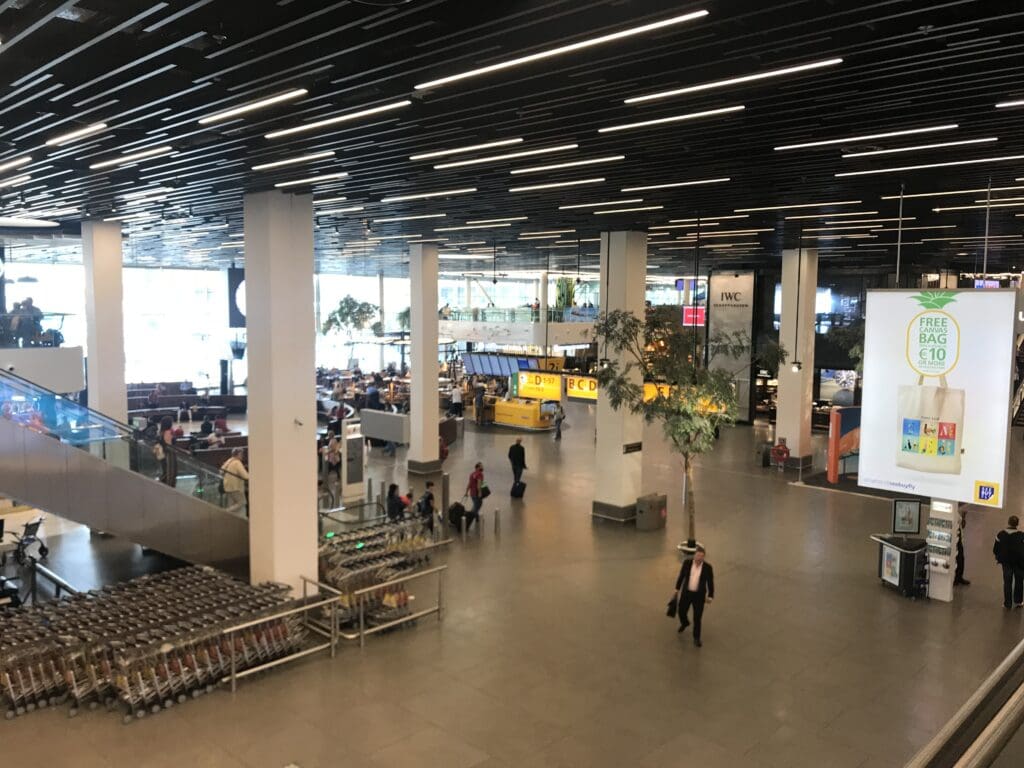
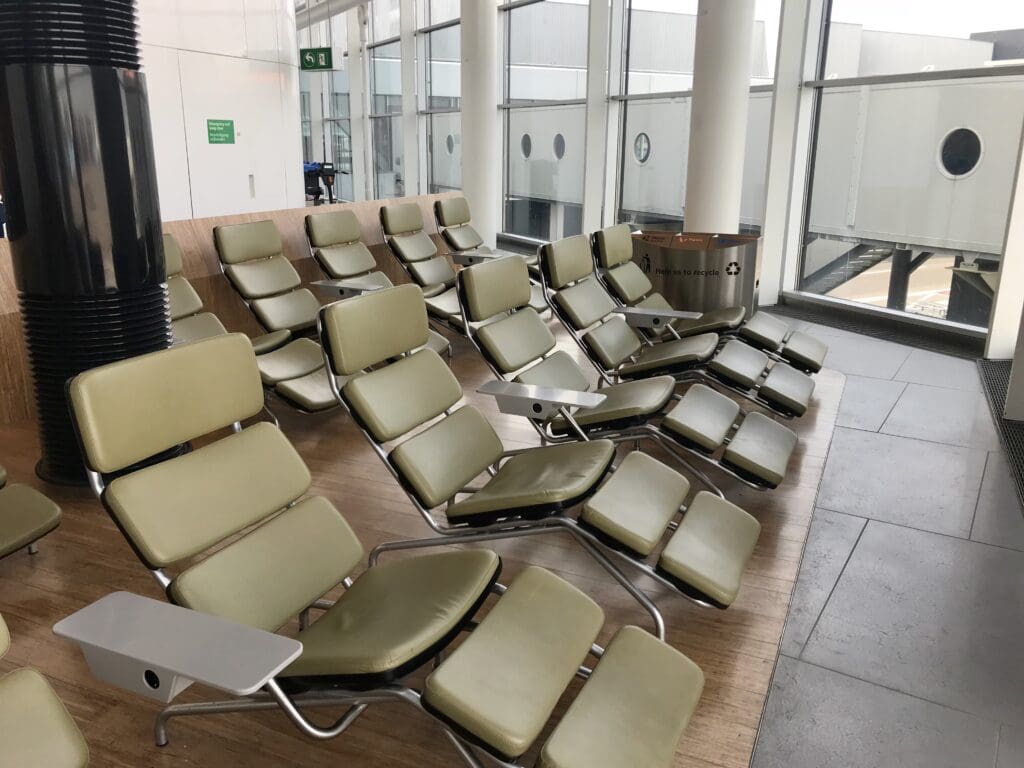
To be honest, those passengers expecting any architecturally spectacular airside area to contrast with the rather dull landside spaces would likely be disappointed with Schiphol. However, airside the terminal did seem to be a little more spacious with floor-to-ceiling windows providing a nice amount of natural light and fantastic views of the apron outside. With only 5% battery remaining and plenty of photos to take, after eating, my next priority was to find a plug socket. Whilst these seem to be provided in abundance, the first four I tried failed to work, however after ten minutes of wandering about, I finally found a plug socket capable of charging my phone. Throughout the terminal, there are some reasonably nice seating areas dotted about here and there, however whether it be due to the non-functional plugs or the rather dirty nature of some of these with rubbish strewn on the floor, a number of these were not the most attractive places to wait. Overall, I was rather disappointed with the Schiphol. During my two-hour transit there in 2016 on my way from Humberside to Seoul, I had concluded that the terminal indeed looked a little worn, however, I lacked the time to examine all the nooks and crannies of the terminal, upon doing so during this trip, my opinion of Schiphol ultimately fell. However, despite all this, I most definitely wouldn’t let the airport stop me from flying with KLM and connecting at Schiphol, nor would I purposefully avoid the airport when travelling to and from the Netherlands. I would however perhaps limit my time at the airport, avoid long connections and, if hungry, eat before heading to the airport, or rely on the expertise of KLM Catering Services to provide culinary delights on my flights to and from the airport.
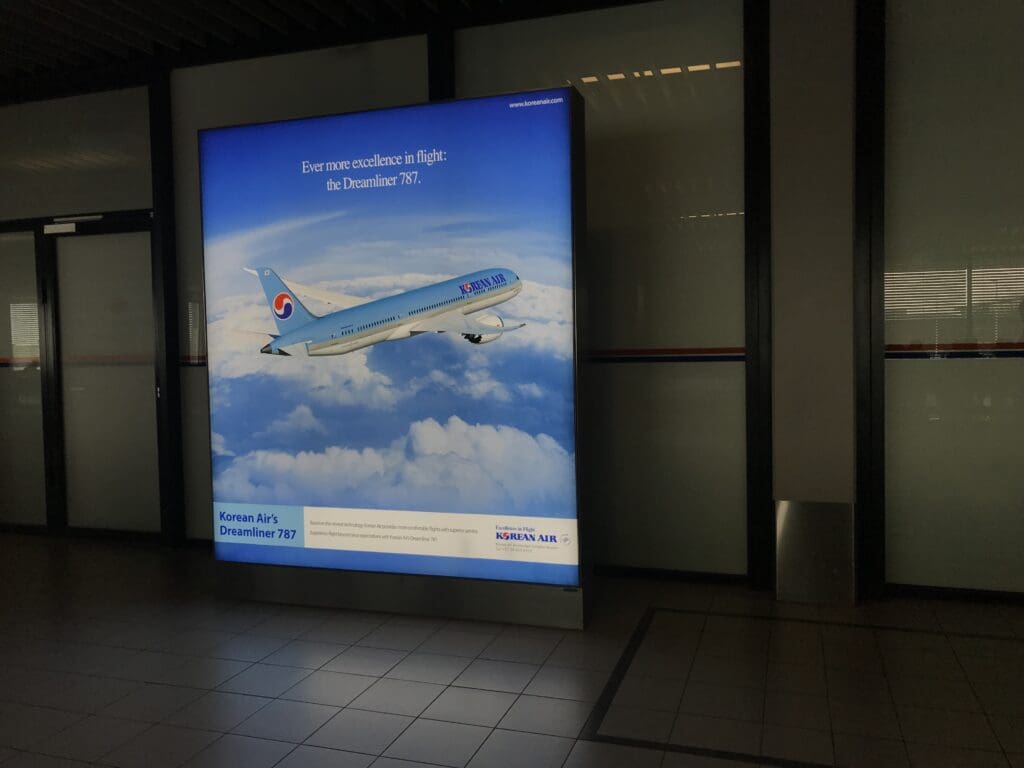
Not wanting to be unreasonably negative I’ll move on to the positives. Throughout the terminal, I found the complimentary wifi to work well, and the toilets were spotlessly clean, thereby serving as a clear improvement from my short experience at the airport in 2016. As previously mentioned, the large windows allowed for excellent spotting opportunities. Looking outside, I managed to spot types ranging from aircraft as small as the Embraer 120 to large Boeing 747-400s and Airbus A380s. As one would expect at Schiphol, the bulk of the movements were provided by hometown airline KLM and, given the nature of the non-Schengen piers, these consisted mostly of widebody aircraft flying to far flung destinations across the world.
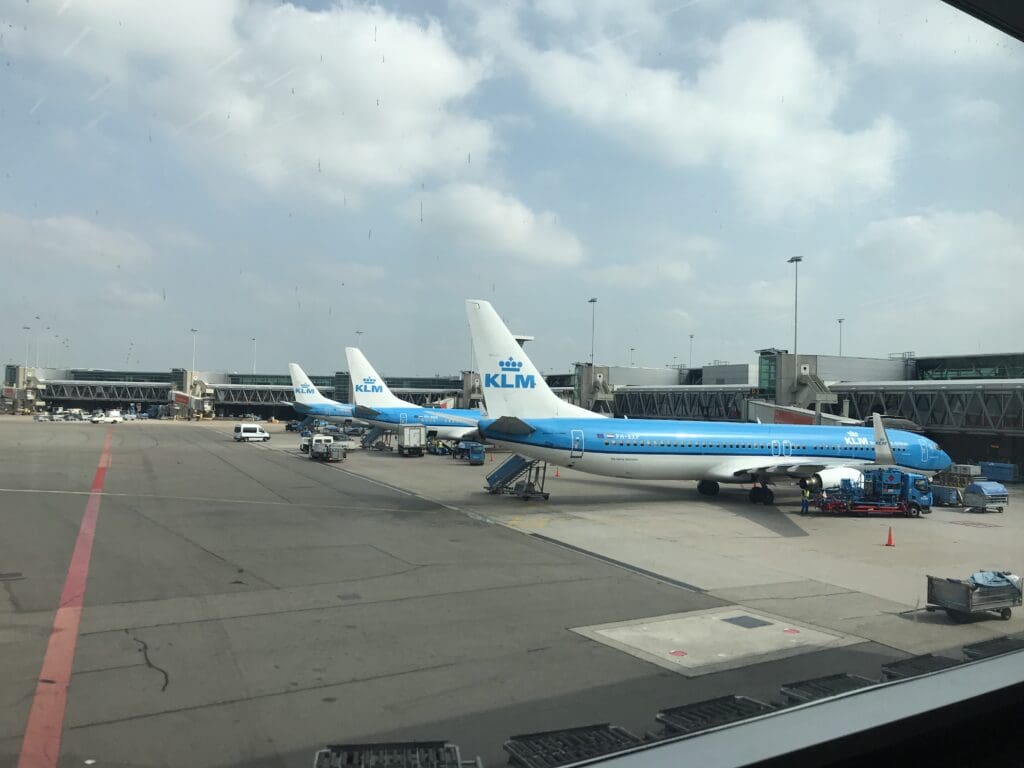
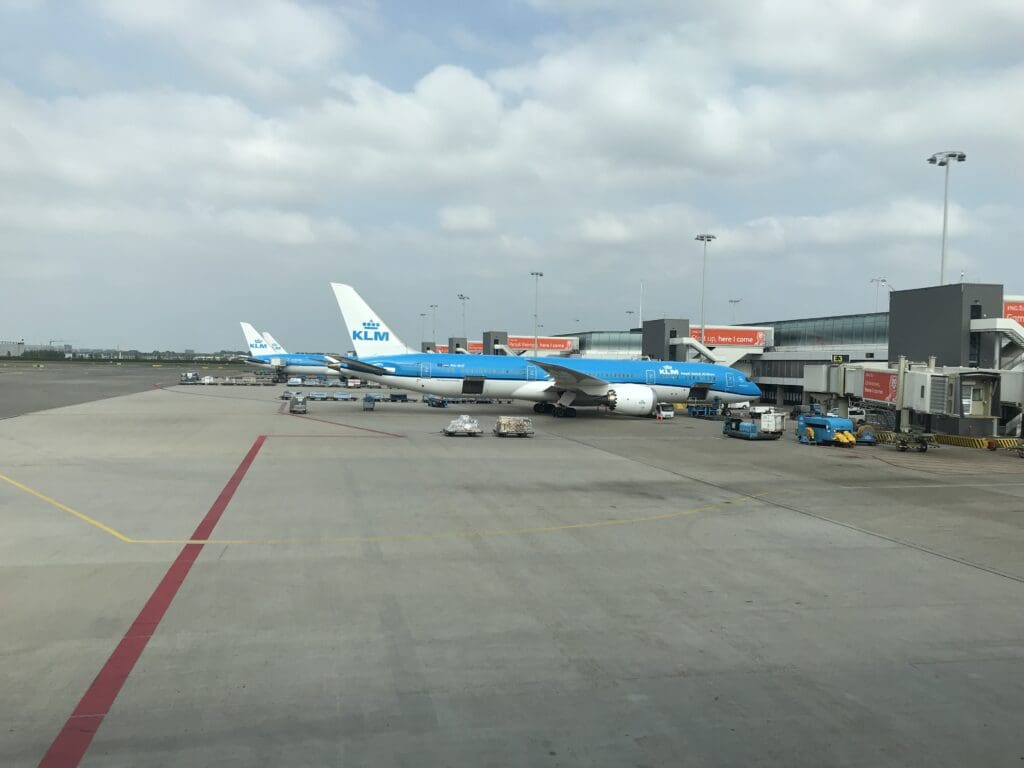
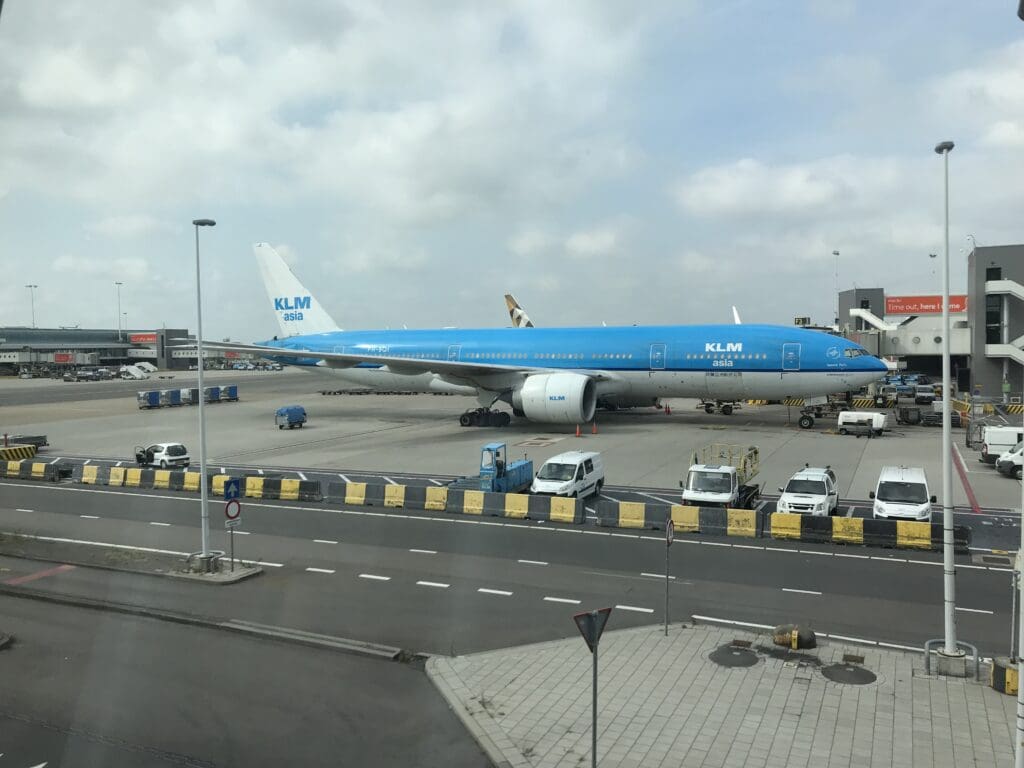
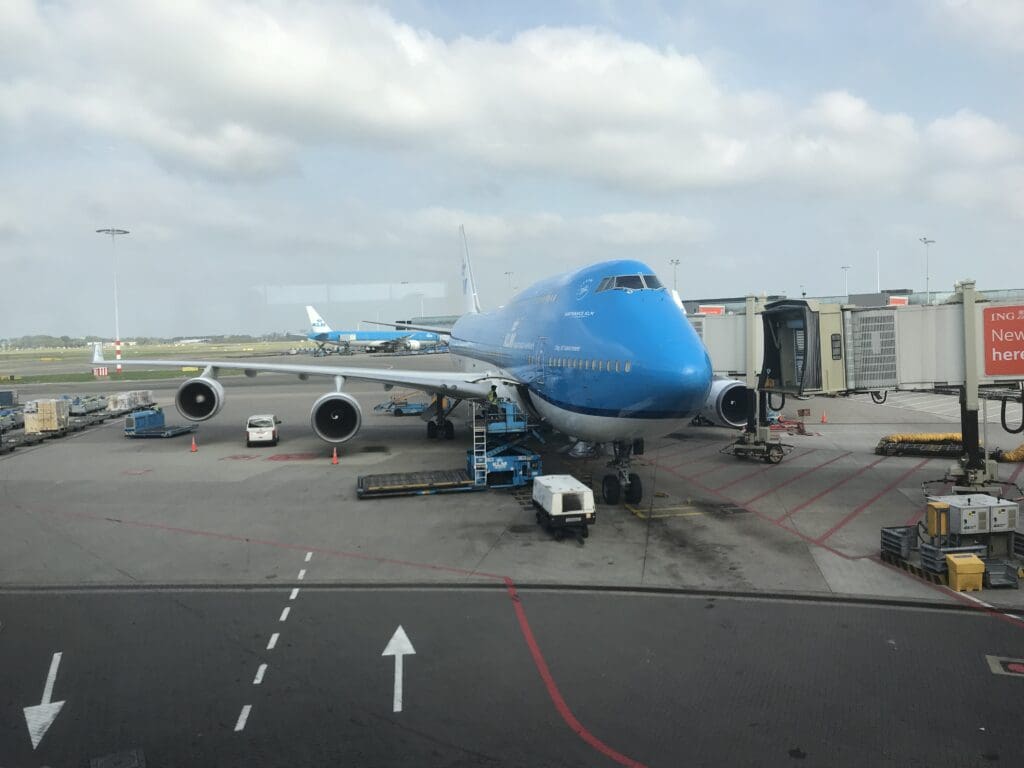
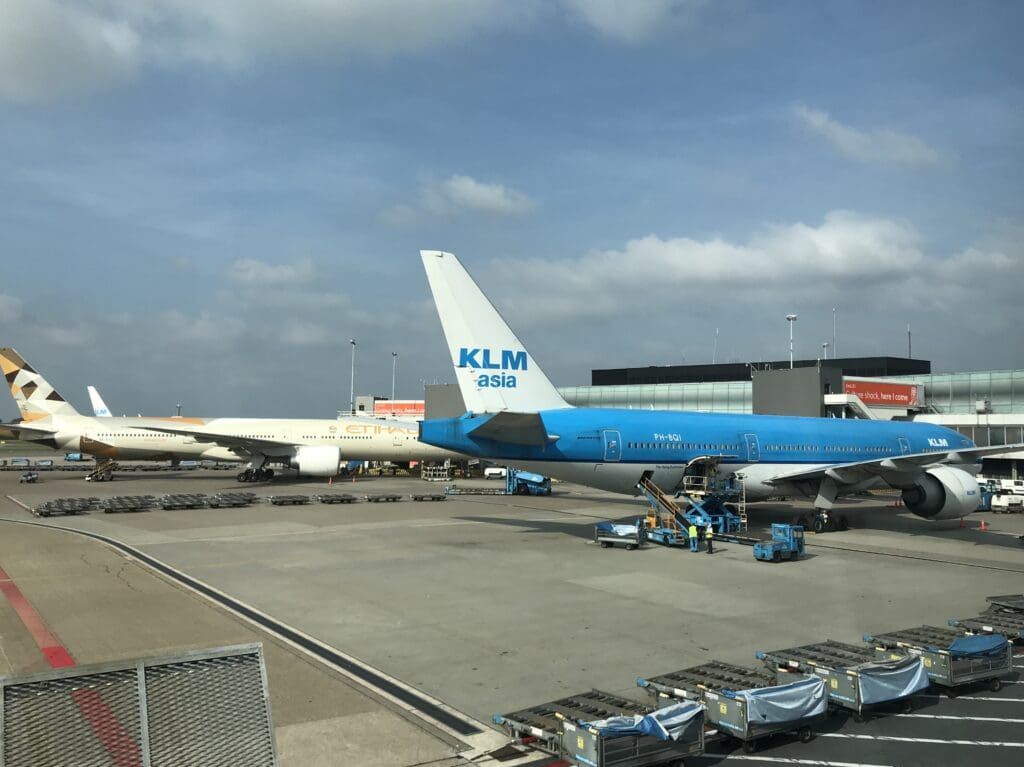
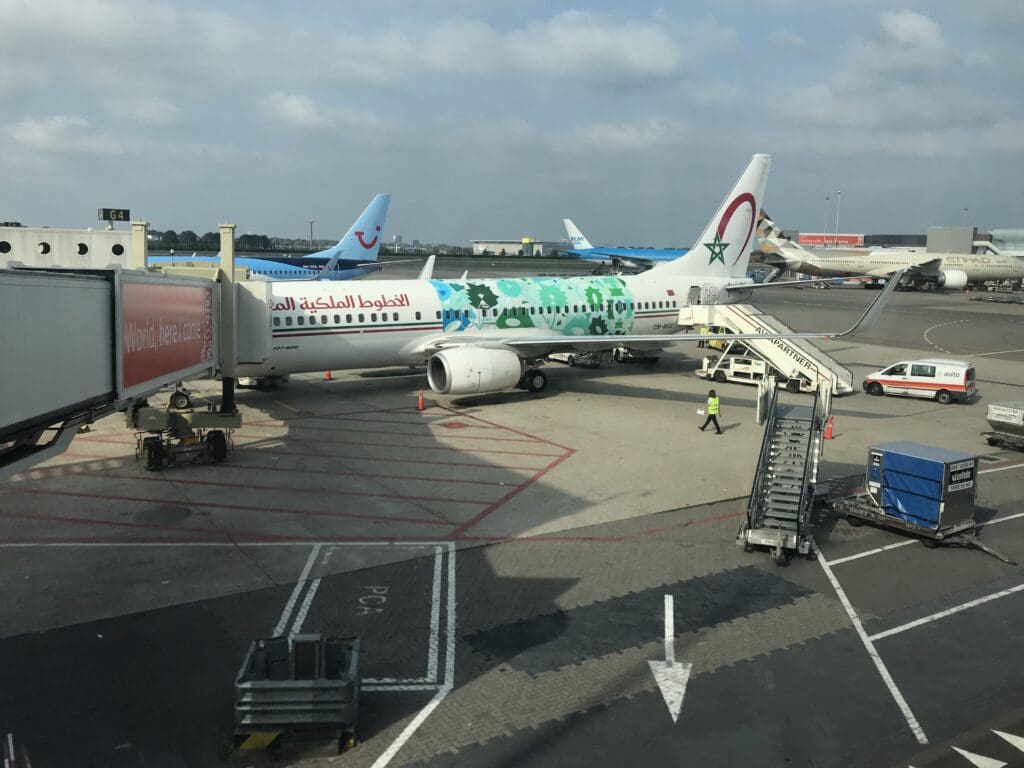
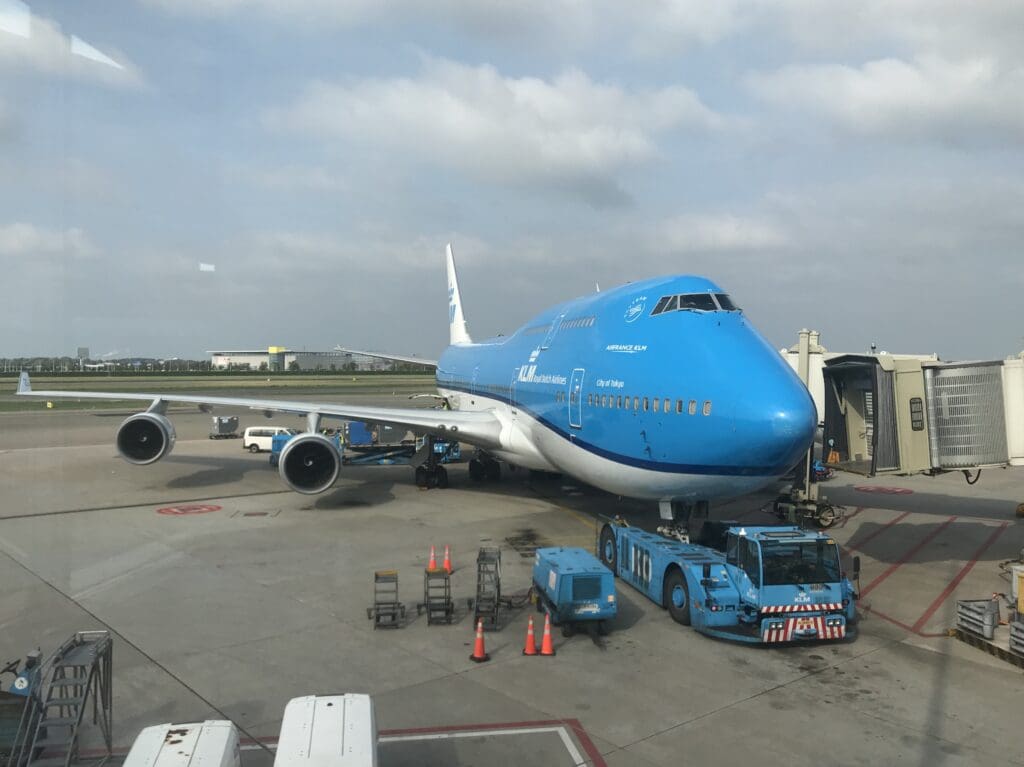
Having finally found a clean seat with a working plug socket and a good view, time flew by as aircraft came and went and by the time I got up for another walk around the terminal, the terminal had emptied significantly owing to the slew of departures to Canada, China and the United States. According to my boarding pass, the flight to Birmingham was scheduled to board at 1815, however with the inbound aircraft scheduled to arrive back in Amsterdam at 1820, our chances of boarding at that time were a little unrealistic, to say the least. Despite this, I decided to head down to D Pier’s bus boarding gates at 1810 which serve as a hub for shuttling passengers to and from KLM Cityhopper’s ‘Embraer Farm’. With KLM Cityhopper’s only flights to non-Schengen destinations being those to destinations across the UK and Ireland, these gates served as a sort of mini British Isles, full of passengers heading on evening flights to Bristol, Cardiff, Dublin, Durham Tees Valley, Humberside, London City, Manchester and Norwich as well as Birmingham. By the time I arrived here, a reasonably long line of passengers had already formed and with little room to sit down, I was left with little choice but to join the queue which would undoubtedly remain static for quite some time. As I waited, announcements were made asking those Birmingham-bound passengers requiring visas to enter the UK to have these ready for inspection.
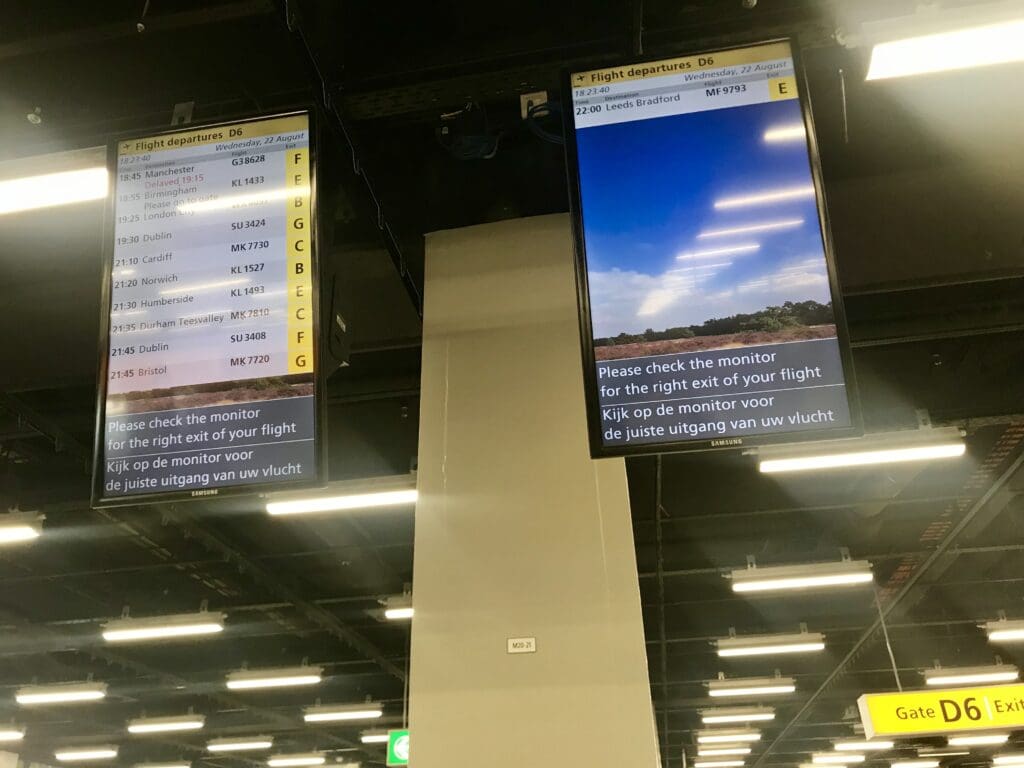
Only thirteen minutes after the inbound aircraft had touched down in Amsterdam, boarding was called at 1830, with Sky Priority and Business Class passengers invited to board first, followed a minute later by an announcement inviting all other passengers to come forward. After a couple of minutes of slowly shuffling towards the front of the queue, my boarding pass was scanned and my passport checked before I hopped aboard the already rather full bus. Once the ground staff squeezed as many passengers onto the bus as possible, the doors slid shut and the bus slowly pulled away from the terminal. Onboard, television screens broadcast a message, thanking passengers for using Schiphol before moving to display the depressing weather forecast for Birmingham which consisted of nothing but rain and temperatures that failed to exceed fifteen degrees (despite being August). However, such temperatures would provide a welcome break from the sweltering temperatures onboard the bus which appeared to lack air conditioning!
After a short journey, rows of KLM’s Embraer jets and the two green T-rails of two-thirds of Carpatair’s fleet came into view. During the summer of 2018, the Fokker 100’s home airport saw a temporary revival of operations of the type thanks to both Carpatair and Croatian airline Trade Air, the latter operating several services on behalf of Air France. As expected, the bus soon came to a halt near the front of YR-FKA. This airframe was the oldest example in Carpatair’s fleet having made its first flight from Schiphol on the 31st of May 1991, making it over 27 years old at the time of my flight. After a month or so of testing, the aircraft was flown over to the US where it began life with American Airlines, flying with the carrier until January 2004. After a short two-month stay in the Mojave Desert, the aircraft found a new life in Quebec with Canadian low-cost carrier Jetsgo, flying with the airline for around a year until its bankruptcy in March 2005. After a year in storage in both Canada and France, the aircraft began operations with Carpatair, who has in the past twelve years operated the aircraft both on the airline’s former scheduled routes and on behalf of numerous other carriers including Adria Airways, Flybe, LOT and Petro Air. For the duration of the summer, the aircraft had been operating flights on behalf of KLM and in the week before my flight flew over 10,900 miles over 34 sectors, connecting Amsterdam with Birmingham, Edinburgh, Hamburg, Montpellier and Warsaw.
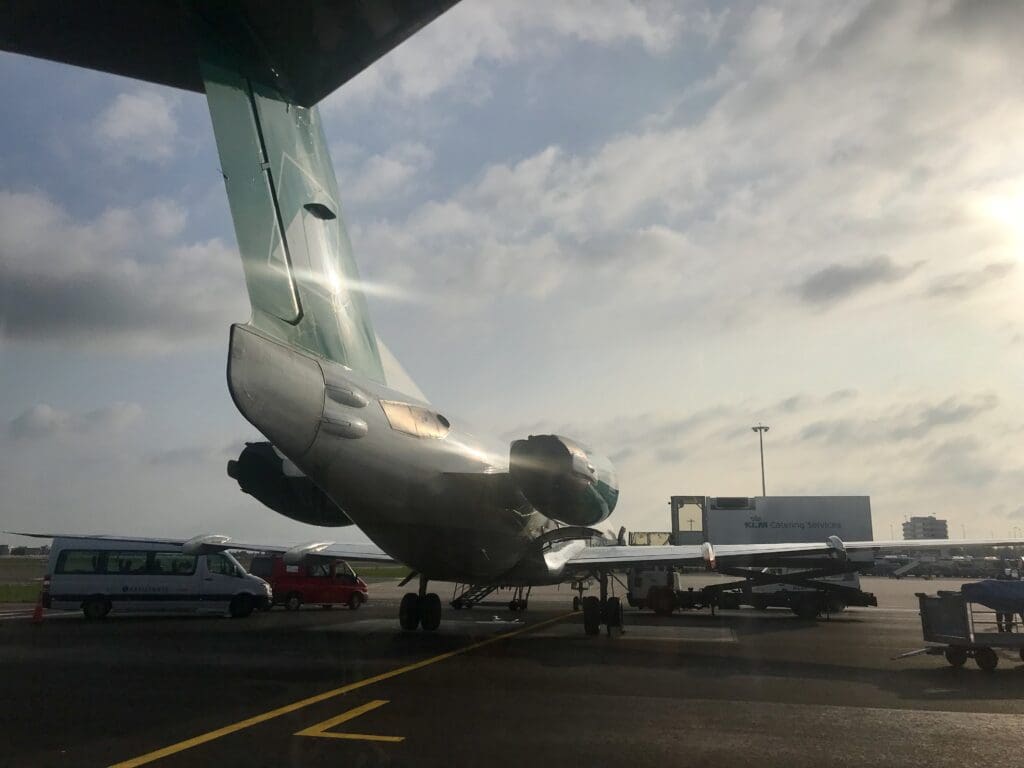
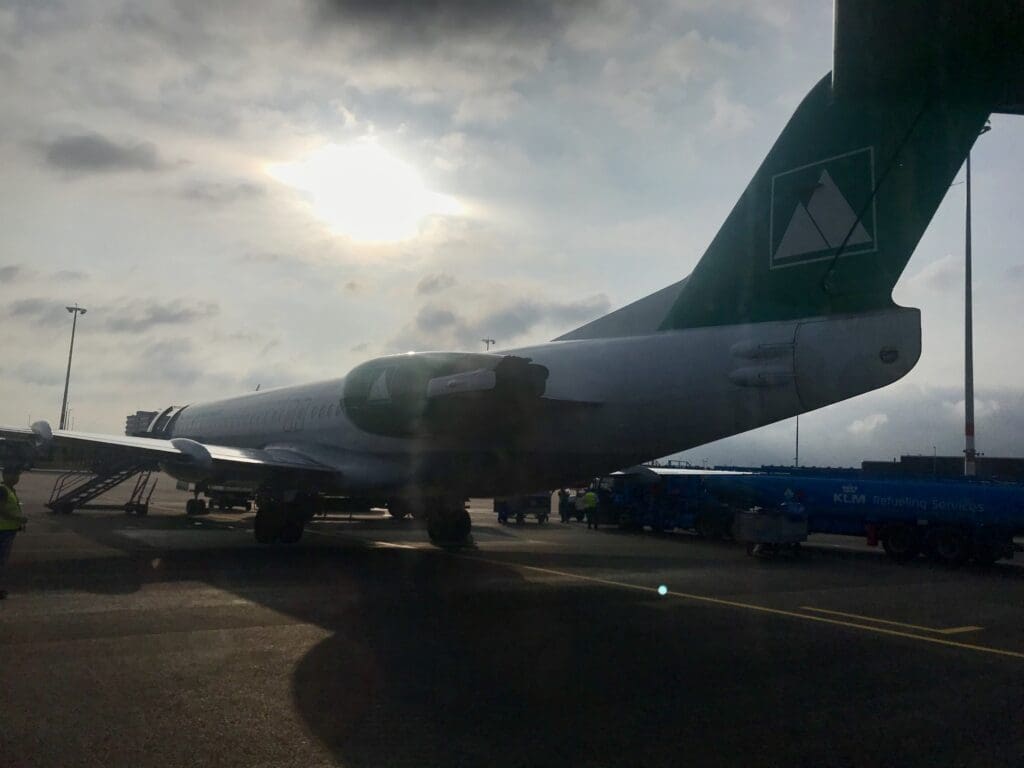
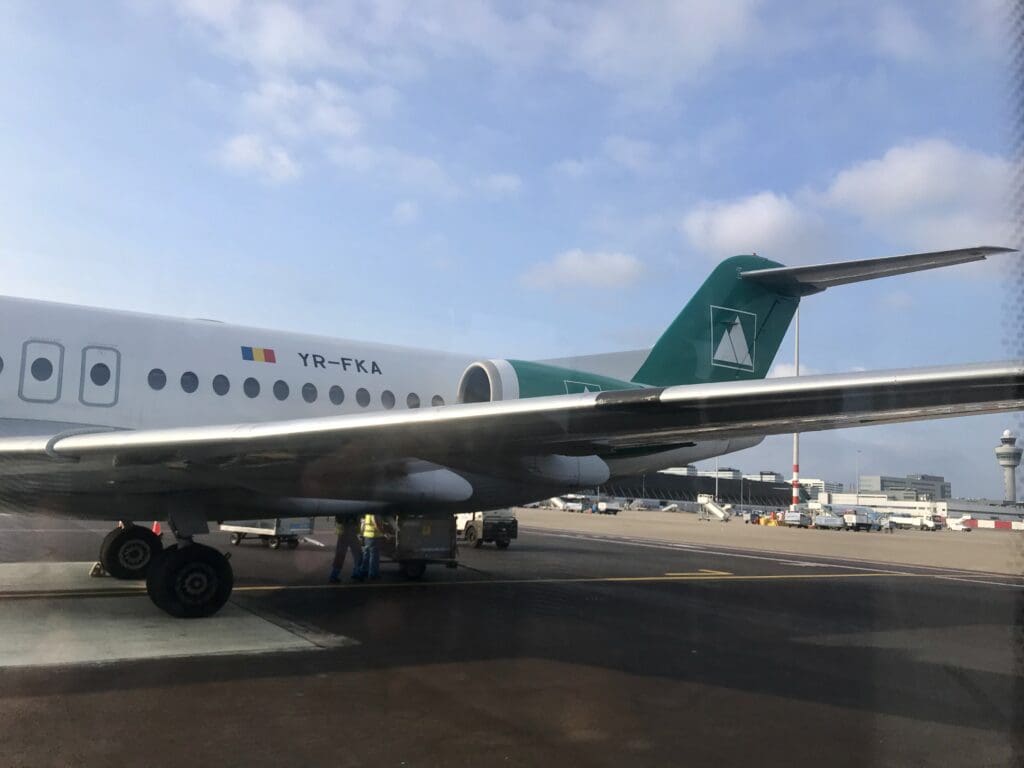
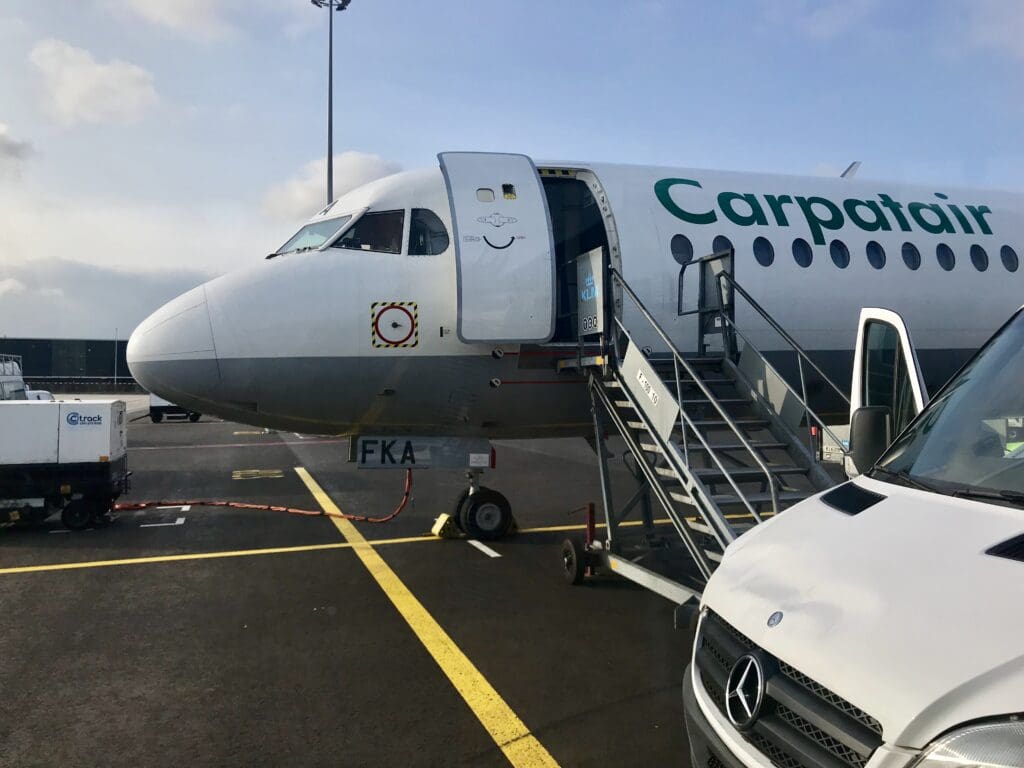
Once the bus came to a halt, most passengers seemed to be unfazed by the fact that a KLM aircraft was not waiting to whisk them across the North Sea, likely due to the well-publicized nature of the operator of this service. During the wait, I overheard one passenger remark to another about how they thought this flight was to be operated by a small aircraft, apparently taken aback by the Fokker’s large size. Whilst one father replied to his son’s question of what type of aircraft it was with an ‘er…Embraer…160’, close…sort of. With only twenty minutes between the aircraft touching down and the bus departing the terminal, I was incredibly surprised about the quick turnaround, especially considering the airport’s notoriously long taxi times. It thus came as no great shock that once the bus came to a stop, some waiting was required before we were allowed to disembark. After a slow five minutes in the bus sauna, the doors opened and all happily stepped out into the refreshing kerosene-scented breeze. Unlike many passengers who appeared to be raring to get aboard, I held back a little to snap some pictures of the aircraft and admire the two Boeing 747 freighters from AirBridgeCargo and Silk Way Cargo Airlines that passed by only a short distance away from the aircraft. With a weathered fuselage and chipped paint on the aircraft’s tail, from the outside, the aircraft appeared to have seen better days. Furthermore, the aircraft had had its LOT stickers removed sometime in late 2016, and the marks these had left were still visible on the fuselage.
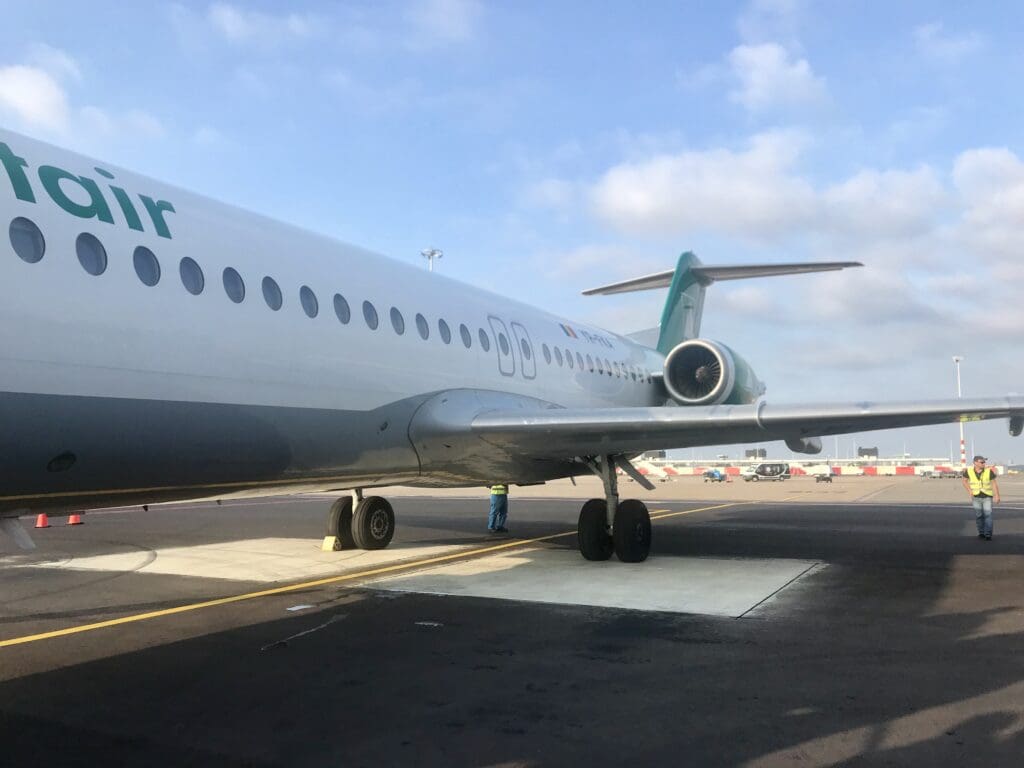
After a few minutes of waiting in the evening sunshine, I headed up the airstairs and soon arrived in the Fokker’s small forward galley. Here I was given a greeting, albeit a rather cold one before turning right and making my way into the aircraft’s cabin which is home to 100 seats in an all-economy 3-2 configuration. As expected, this was devoid of any slimline seats such as those that had been fitted to KLM Cityhopper’s Fokkers in their final years, instead featuring classic chunky dark blue (faux?) leather seats. As a reminder that the aircraft was operating on behalf of KLM, each seat featured a blue antimacassar on which the airline’s logo was debossed. Following a reasonable wait in the aisle I finally reached row 20 where I found a couple occupying seats 20E and 20F. To be rather honest, if this had been a flight on a less interesting aircraft type, I would have taken the aisle seat without a word. However seeing as I had paid extra to sit in the window seat, I politely asked whether it would be okay to sit in 20F, fortunately, my request was approved although I did feel a little guilty about this.
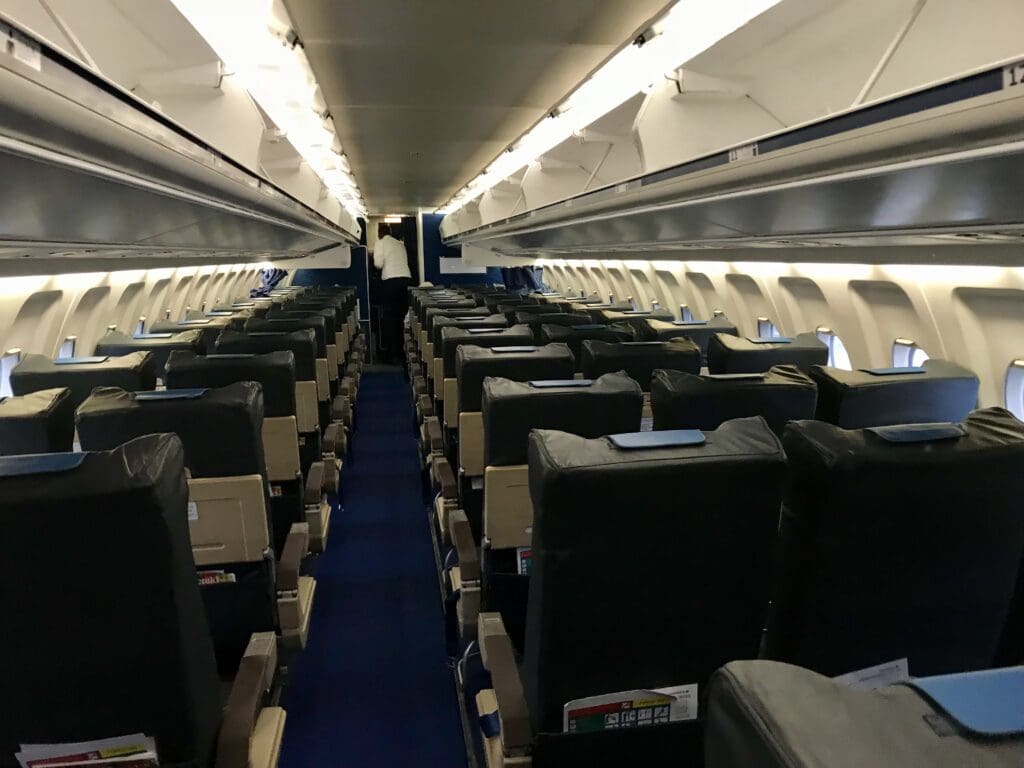
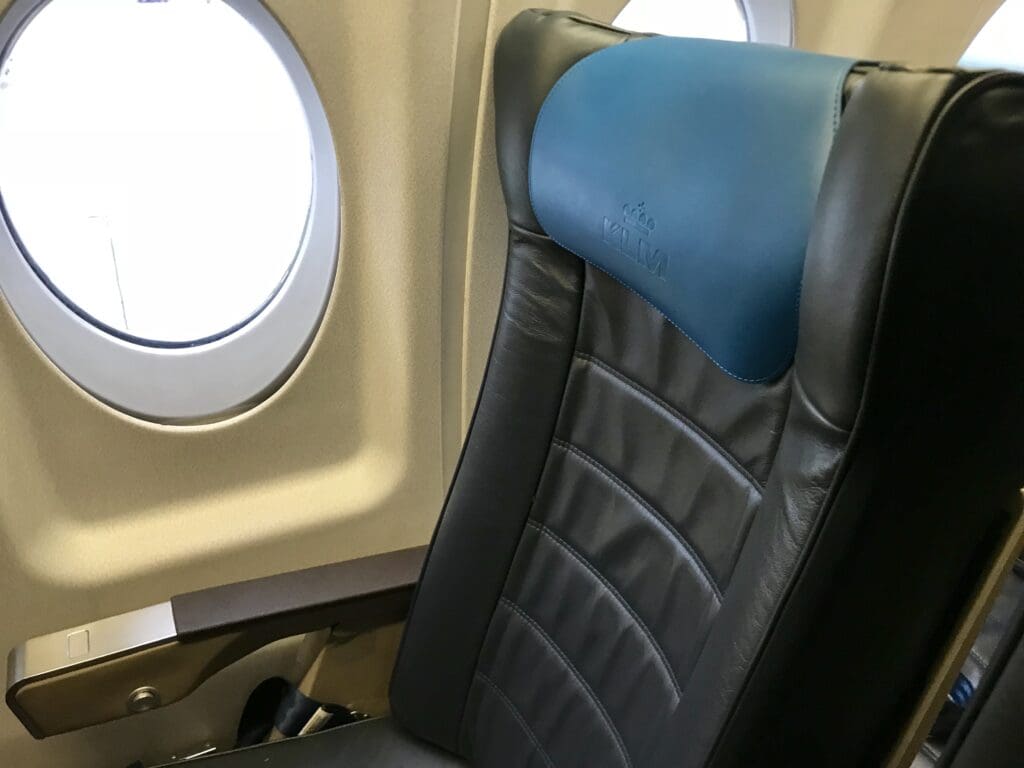
Upon taking my seat, I was instantly reminded of how large the oval-shaped windows on Fokker jets are, although unfortunately this was heavily scratched which prevented any high-quality photos from being taken through this. On the plus side, the porthole did align perfectly with my seat. Aside from the odd scratch and mark here and there, I was both impressed and surprised to find the cabin in a reasonable shape. Furthermore, despite the quick turnaround time, the area around my seat appeared to be spotlessly clean and devoid of rubbish or crumbs. Turning to the seat, whilst this felt a little hard, the amount of legroom provided was perfectly acceptable for a short flight and so I ended up with little to complain about this. In the seatback pocket, a copy of the August 2018 edition of KLM’s Holland Herald magazine, a sick bag and a Carpatair safety card could be found.
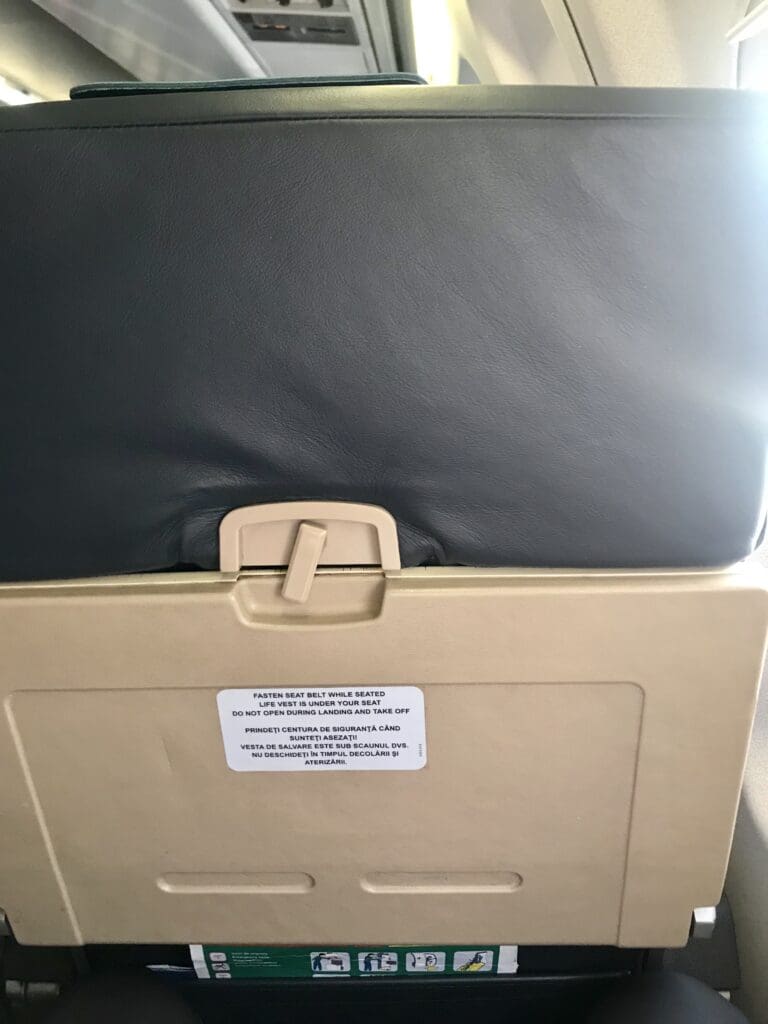
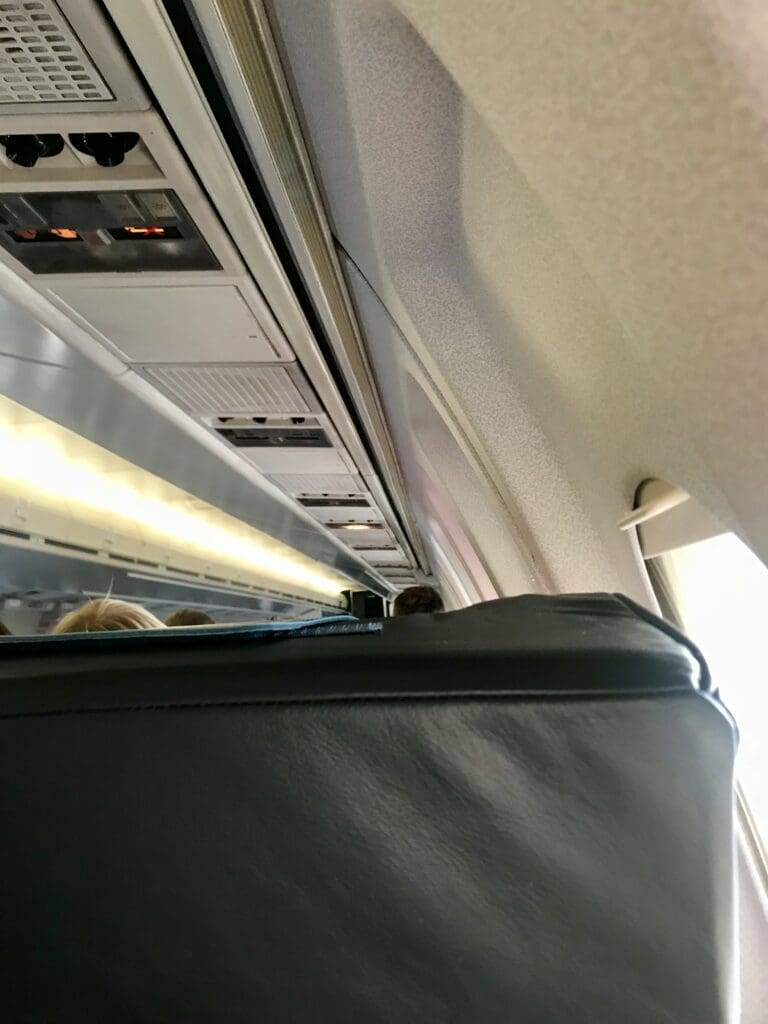
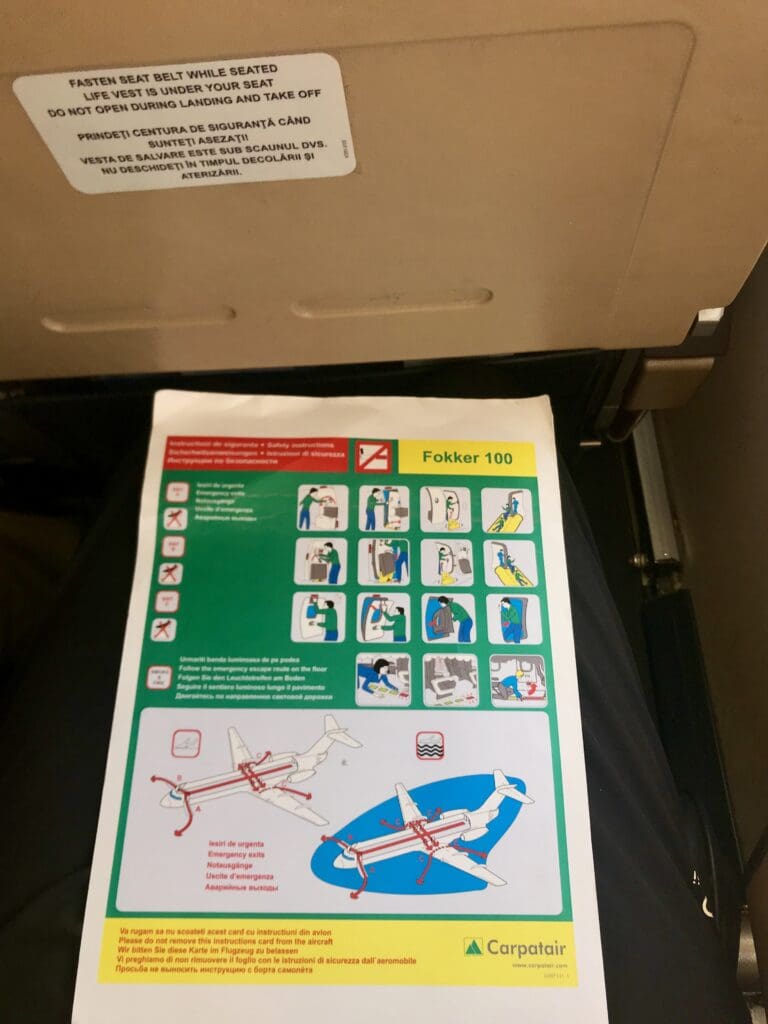
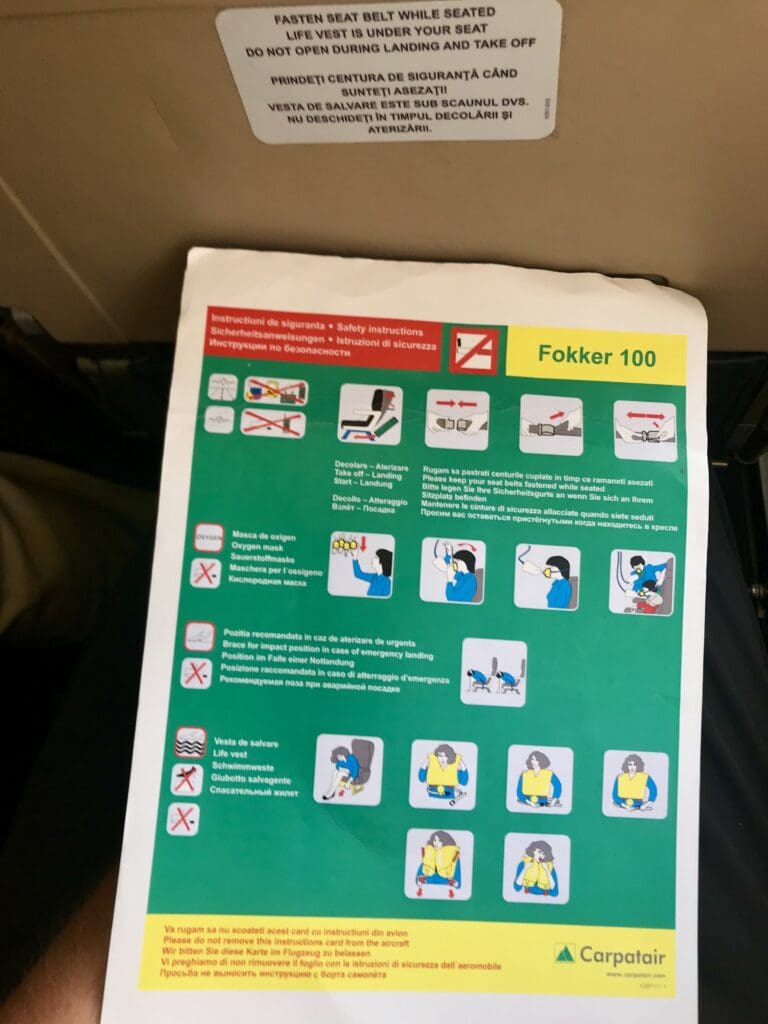
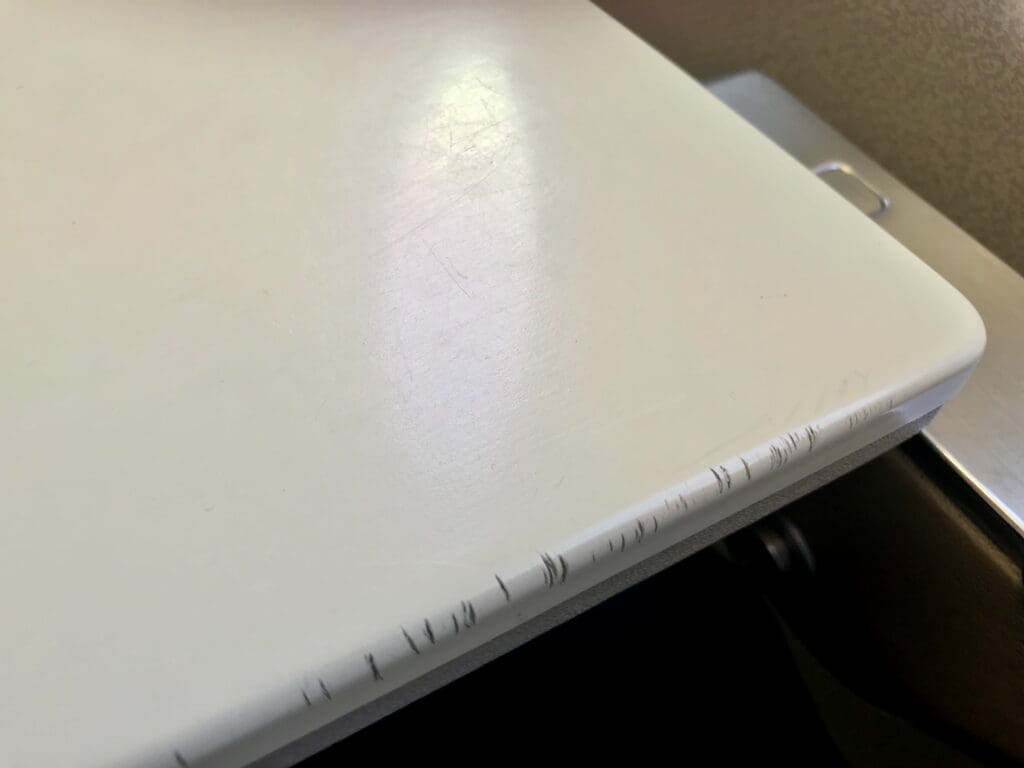
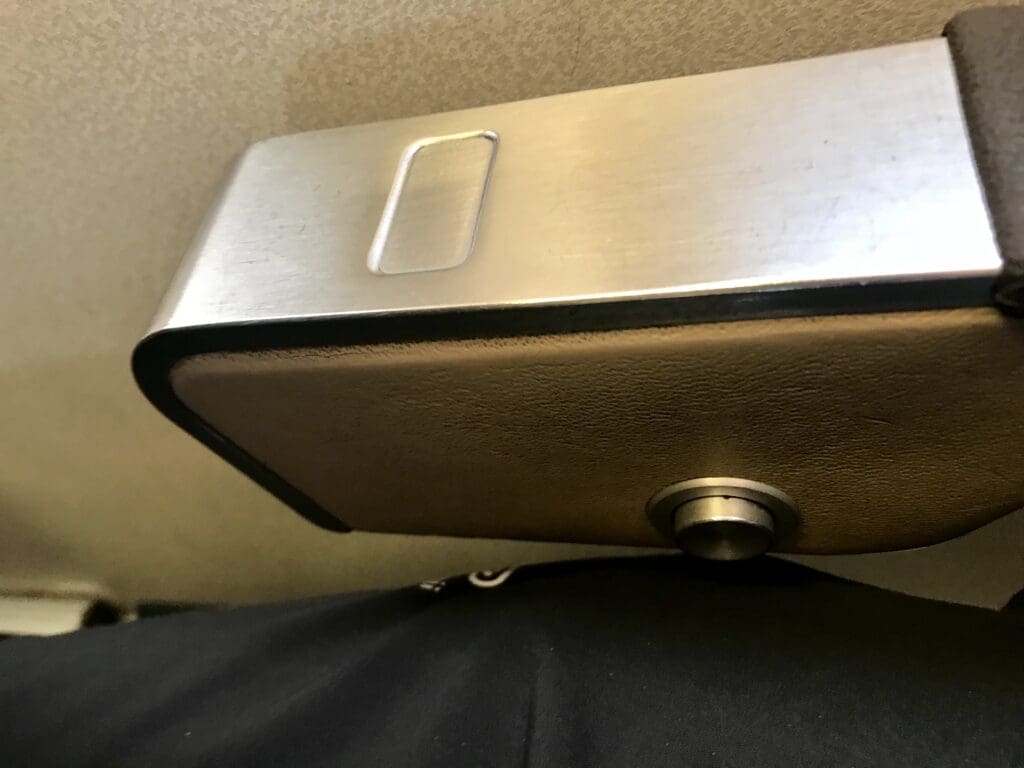
By the time I had strapped myself in, the second and final load of passengers had begun to board the aircraft. Although, seeing as it was already 1854, unless these passengers could take their seats within a minute, an on time departure would have been impossible. However, unlike the slow group of passengers from the first bus, those on the second bus seemed to be much quicker at finding their seats, stowing their luggage and sitting down. By 1900 boarding was complete and that evening, the flight appeared to be 100% full. Given KLM’s high point-to-point fares between Amsterdam and Birmingham when compared to competitor Flybe, it came as little surprise that the majority of passengers had arrived on connecting flights, with many passengers having arrived on KLM’s afternoon bank of arrivals from East Asia. Turning to the crew, two flight attendants would be staffing the flight over to the UK, both of whom were unsurprisingly provided by Carpatair and dressed in the airline’s rather plain uniform.
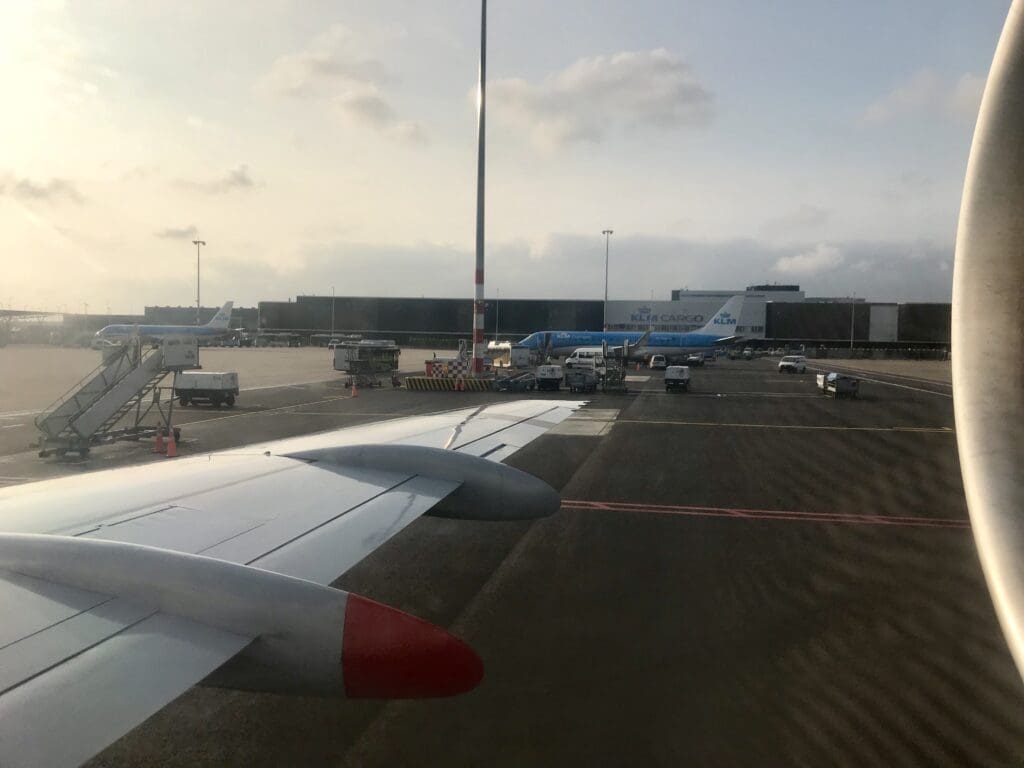
As no pushback was required from the stand, only moments after the main cabin door was closed, the Fokker 100’s two Rolls Royce Tay 650 engines whined and spluttered into life whilst still on stand. This filled the rear of the cabin with noise, perhaps leaving most of my neighbours longing for a Boeing 737 or an Embraer. As the two engines spooled up, the Purser performed a welcome announcement before reading through the safety instructions as the other crew member performed a manual demonstration in the aisle. As this was underway, the jet lurched forward out of the stand before turning right and commencing its quick taxi towards Runway 22. During the journey over to the runway, I caught sight of the aircraft’s Hangar 73, named after Anthony Fokker. Interestingly, as the aircraft made its way to the runway, the flaps remained fully retracted – I later learned this is a rather common procedure for Fokker jets when departing from long runways.
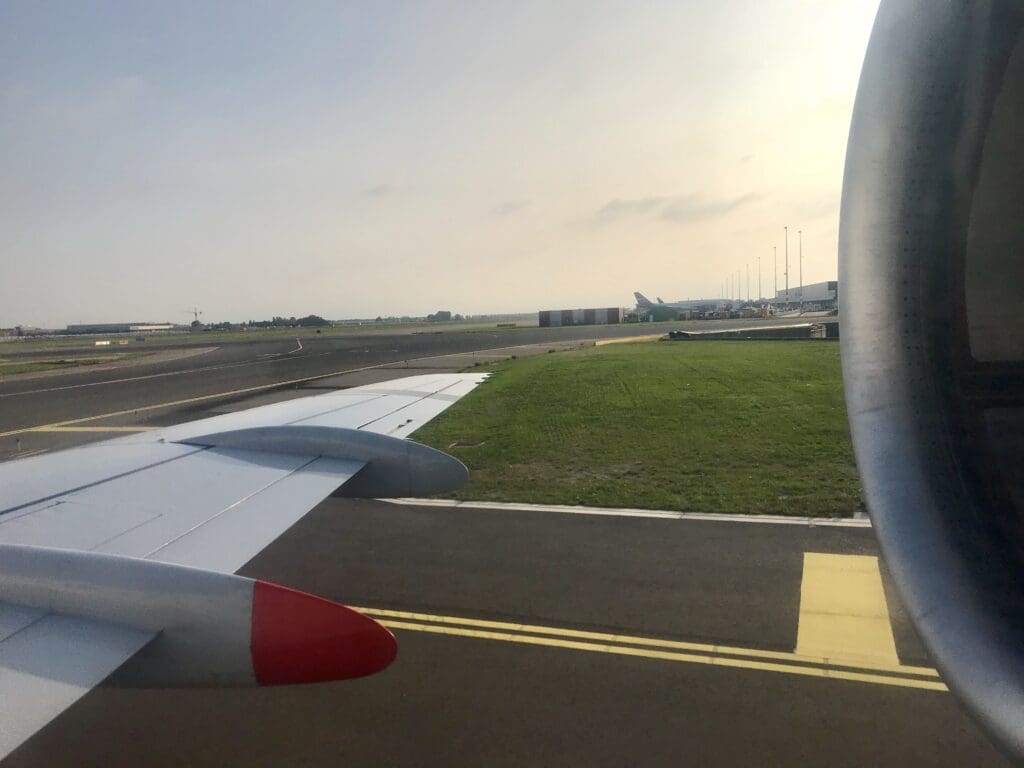
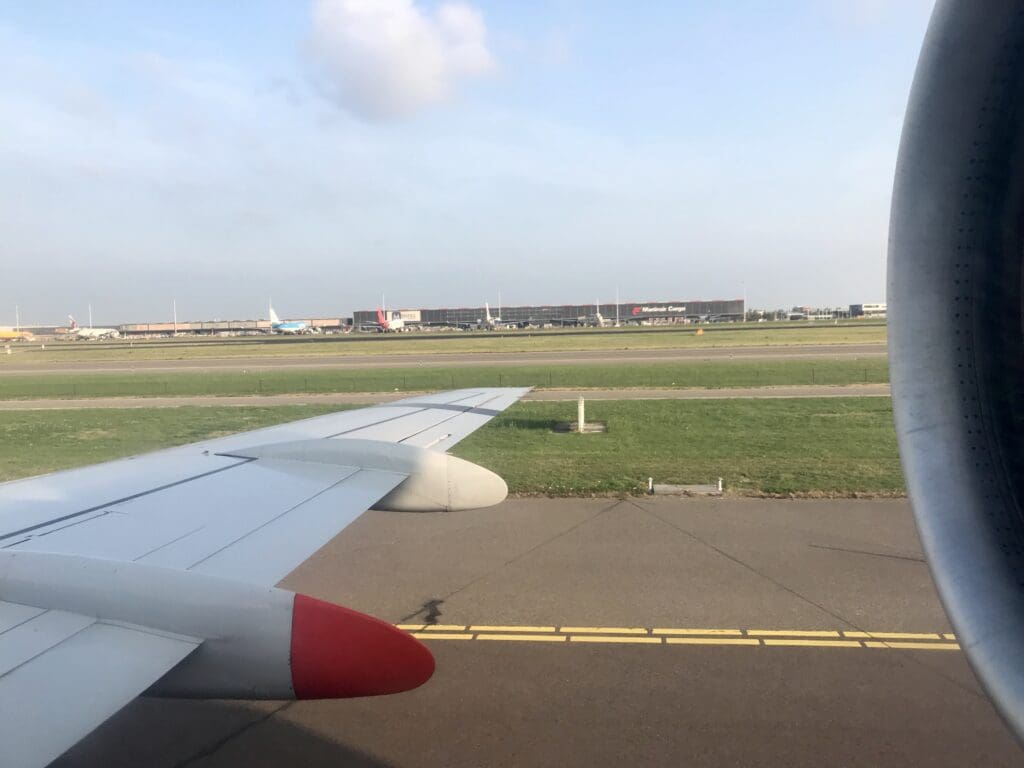
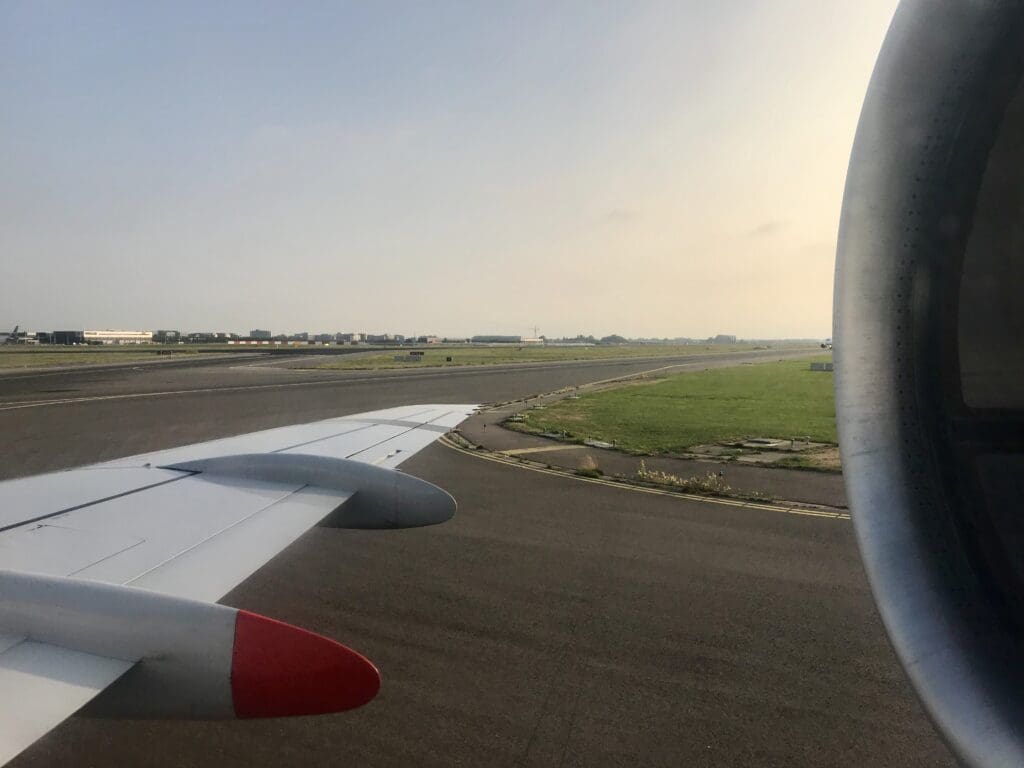
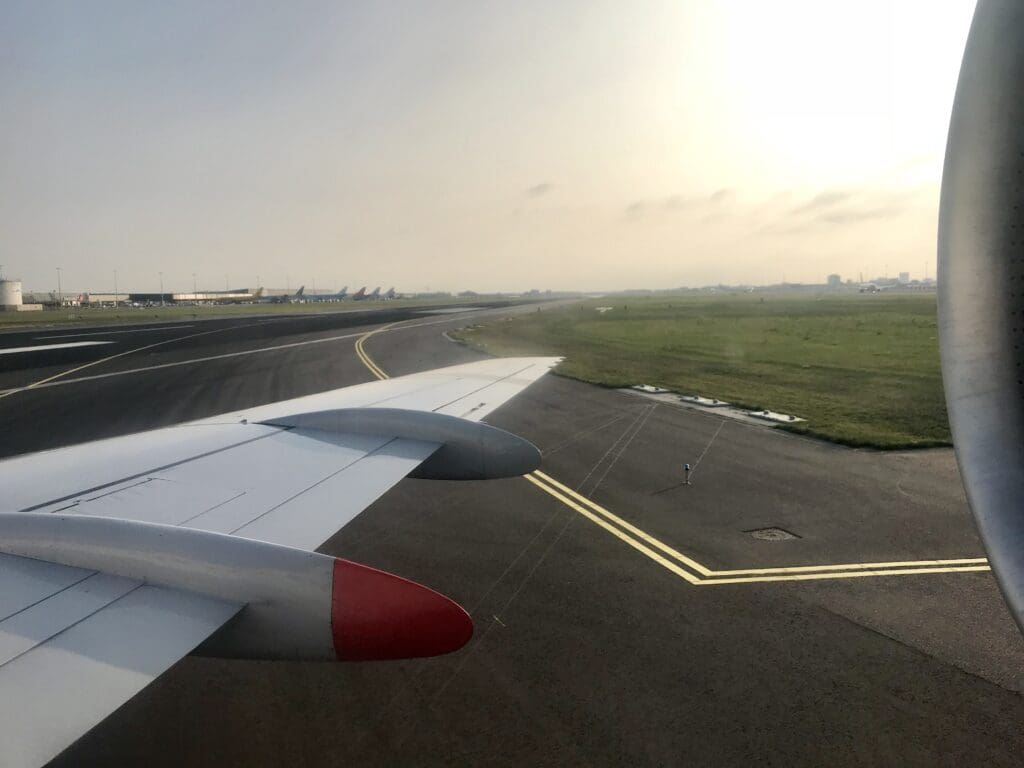
Whilst the airport appeared to be reasonably busy, upon arriving at the Oostbaan, the Fokker 100 made its way straight onto the runway without any holding before commencing its takeoff roll. At 1910, the jet rotated up into the Dutch skies giving a decent view of the airport’s surroundings before turning slightly right onto a course of 250 degrees. After departure, the aircraft maintained a smooth and steady climb before crossing the coastline near the South Holland seaside town of Noordwijk around five minutes after taking to the skies. As the aircraft headed out over the blue waters of the North Sea, several offshore platforms and a flotilla of large cargo ships could be seen before a sea of clouds filled the skies below.
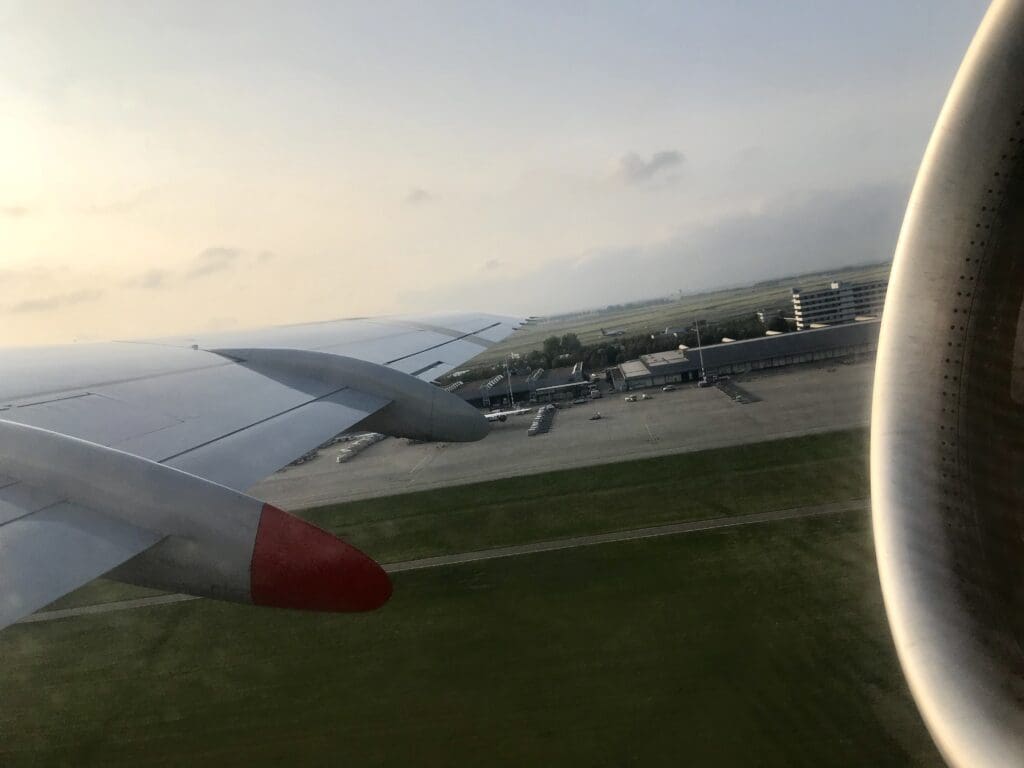
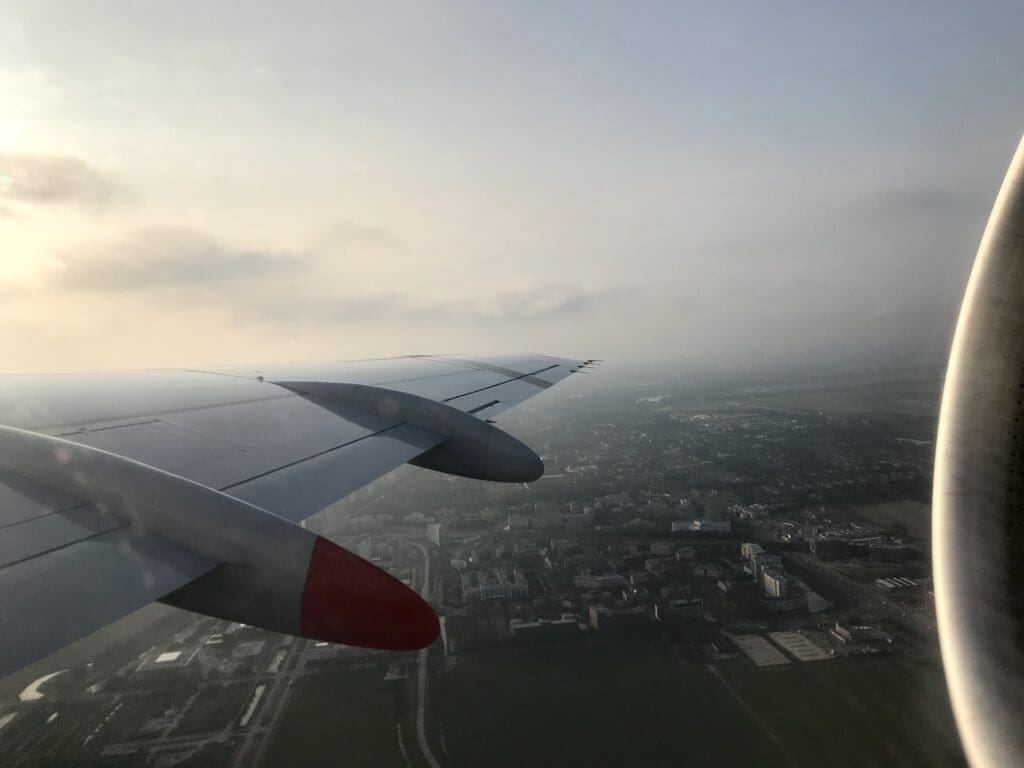
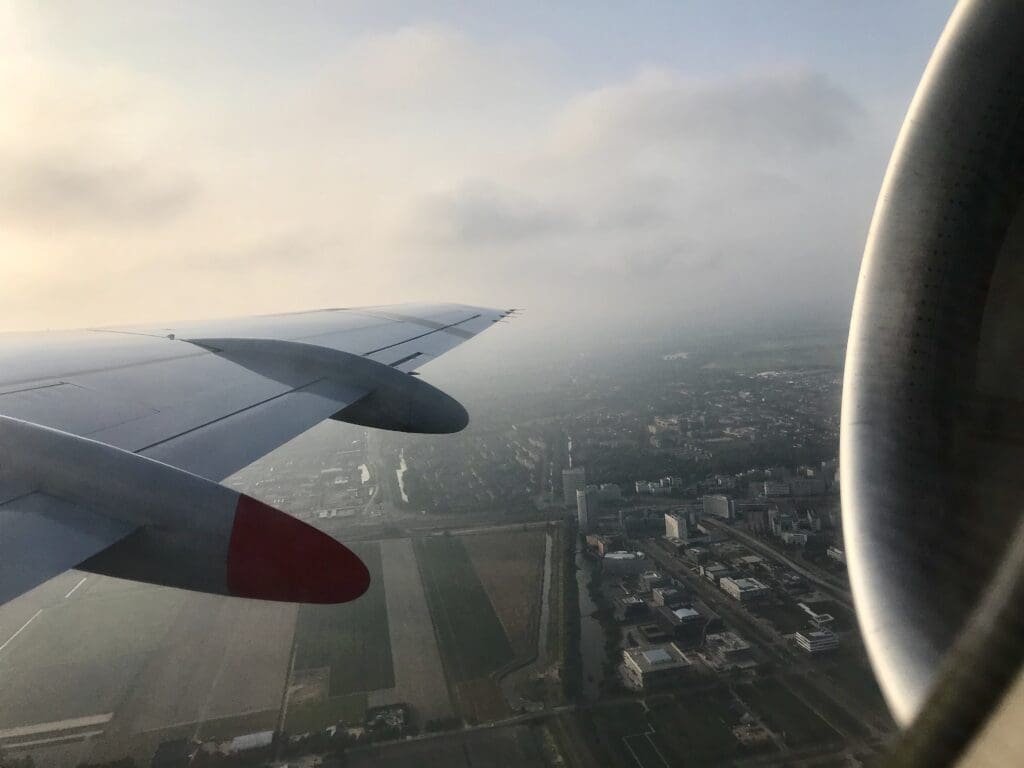
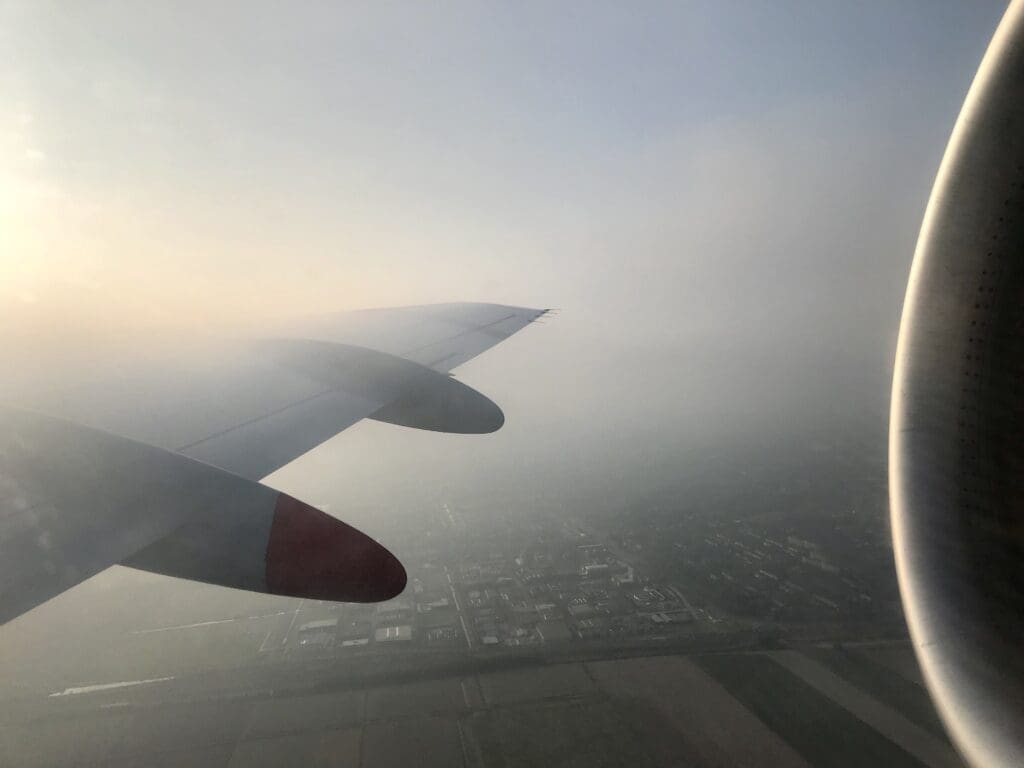
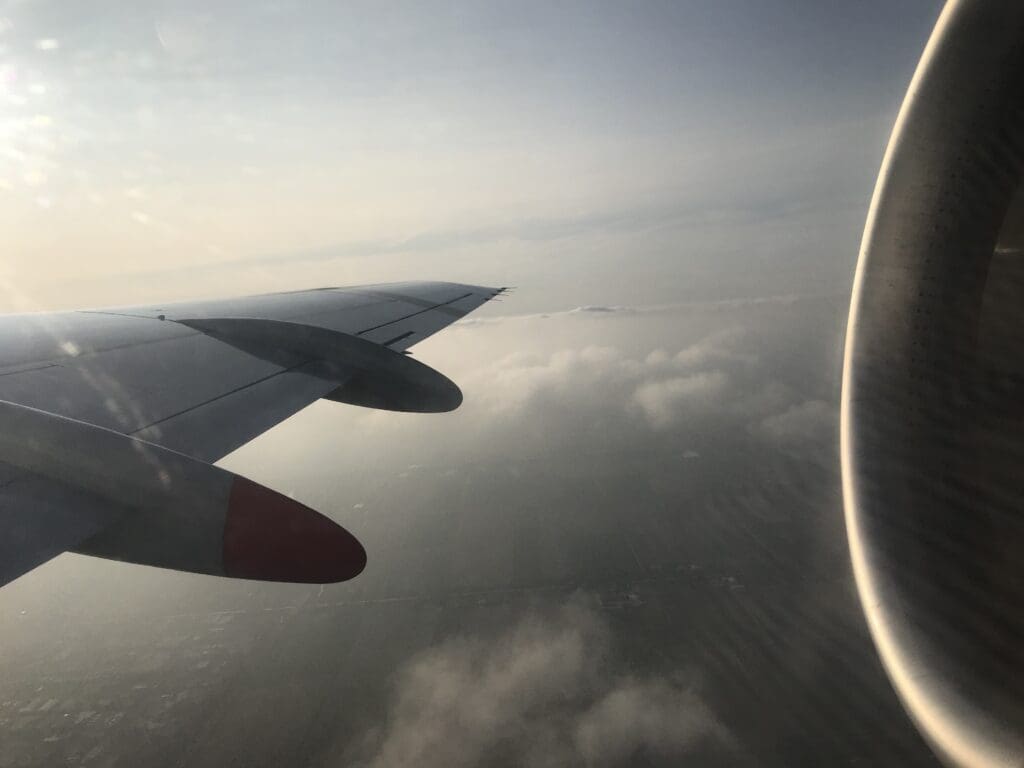
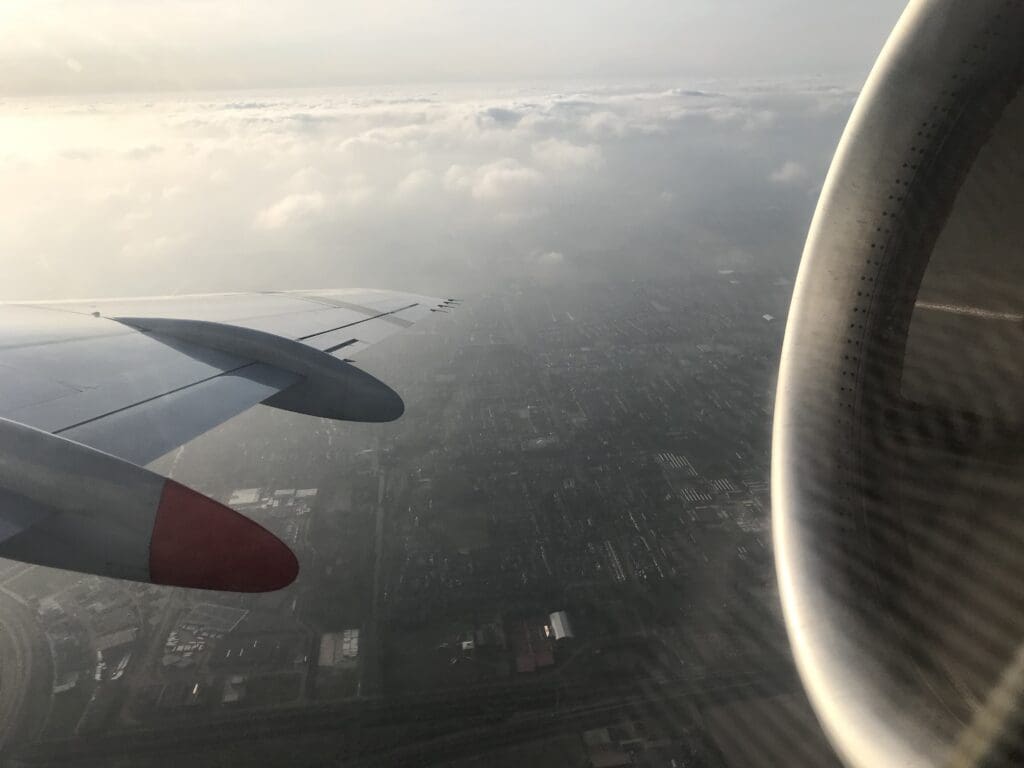
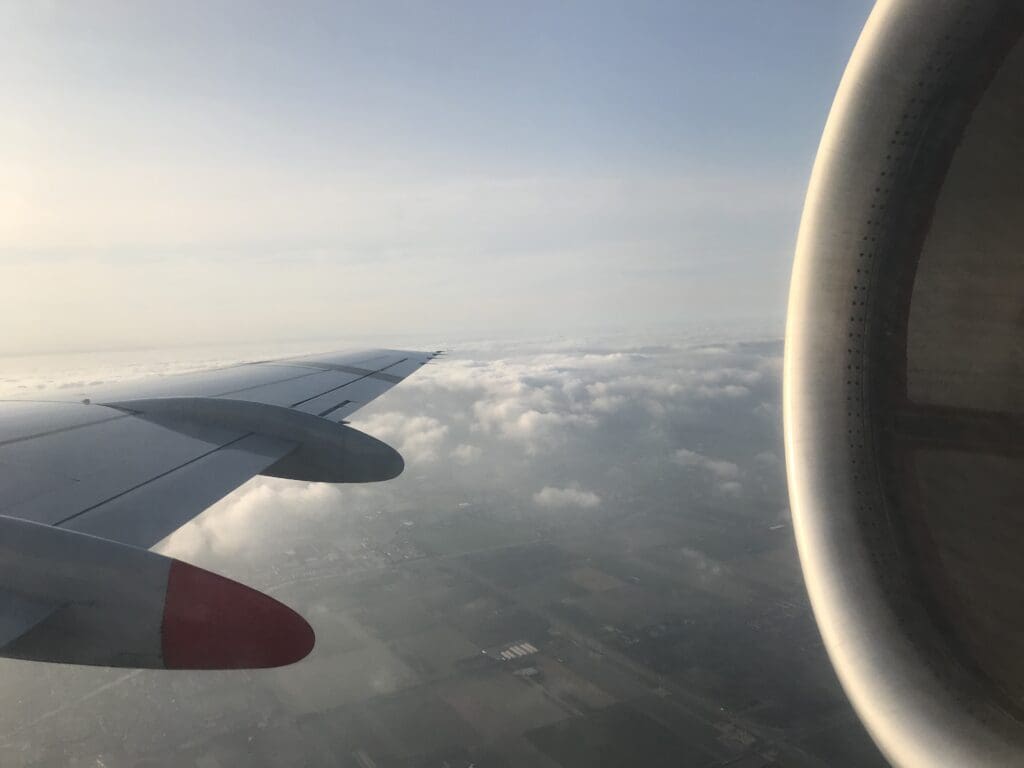
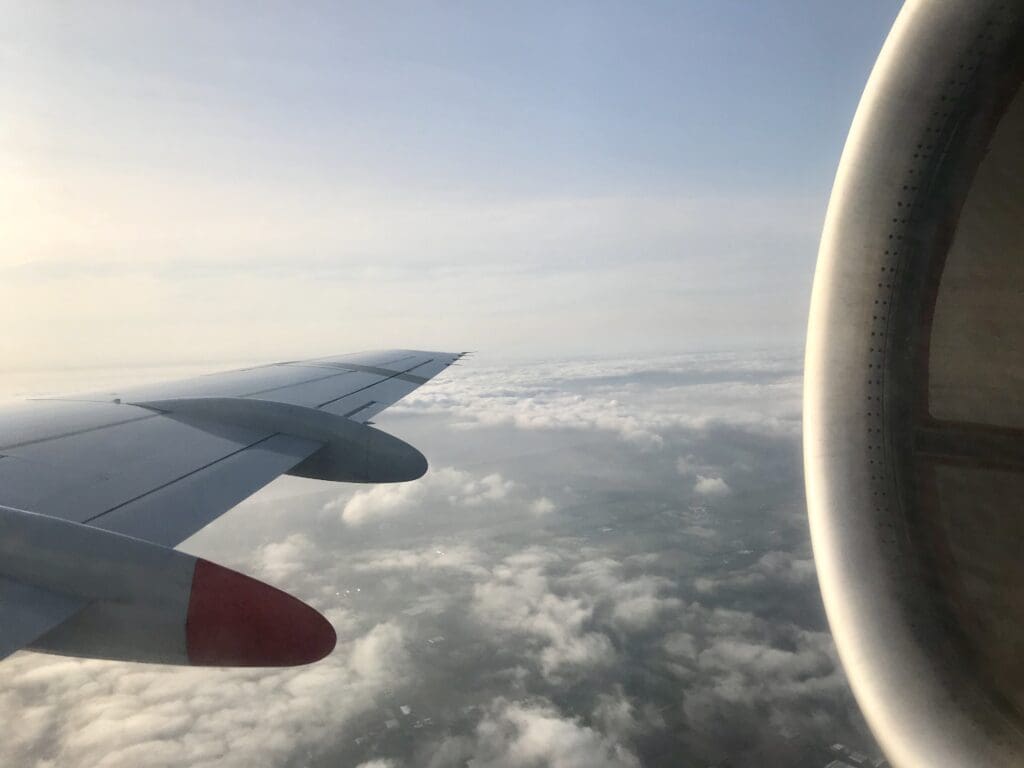
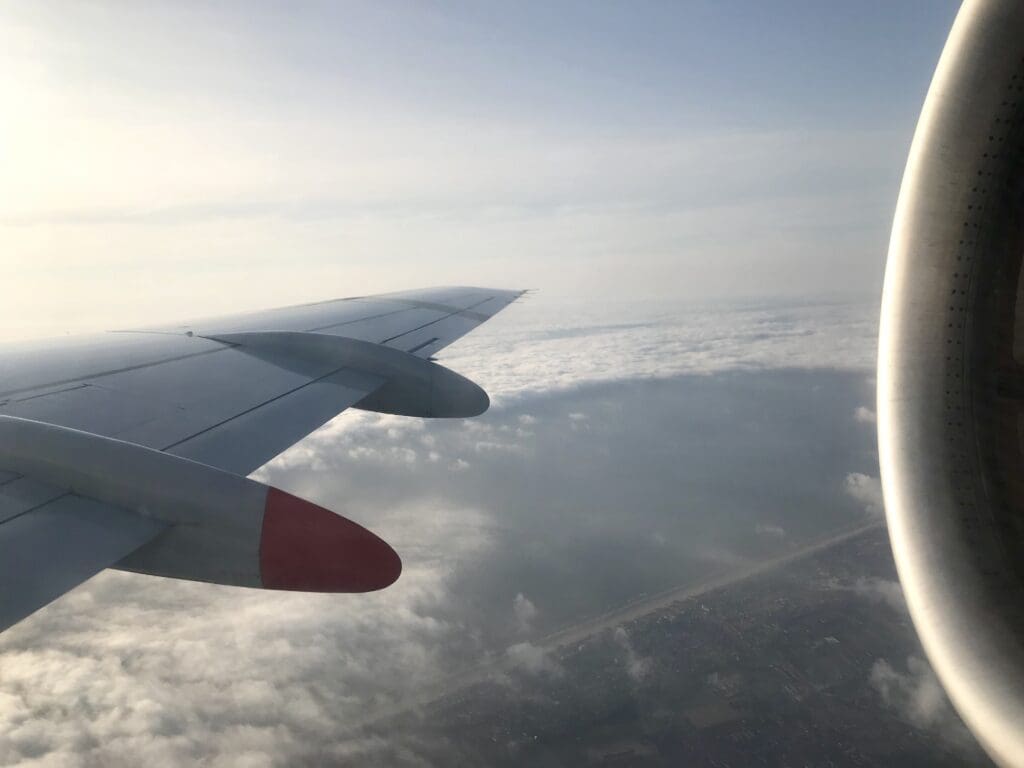
As soon as the aircraft ascended through 10,000 feet the seatbelt signs were switched off and the crew immediately sprang into action. Indeed, given the short nature of this flight, no time could be wasted if the crew intended to serve all passengers. That evening, the meal offering was identical to that served on most of KLM’s short-haul flights across Europe and consisted of a nicely designed small box containing a half-sandwich (that day this contained chicken), a stroopwafel style biscuit and a small tub of water. These were handed out in a rapid yet friendly nature by the more junior of the two crew members whilst the Purser tended to those in the aircraft’s makeshift business cabin before coming to assist with the drinks round a little later on. Within a couple of minutes, the cabin crew member distributing the meal offering neared the rear of the cabin and so I lowered my incredibly large tray table in preparation to receive this. Whilst I had expected this service, I have to say that I considered myself lucky to receive such an offering on a flight of less than an hour; it would be perfectly easy for KLM to relegate this to nothing more than a drinks round.
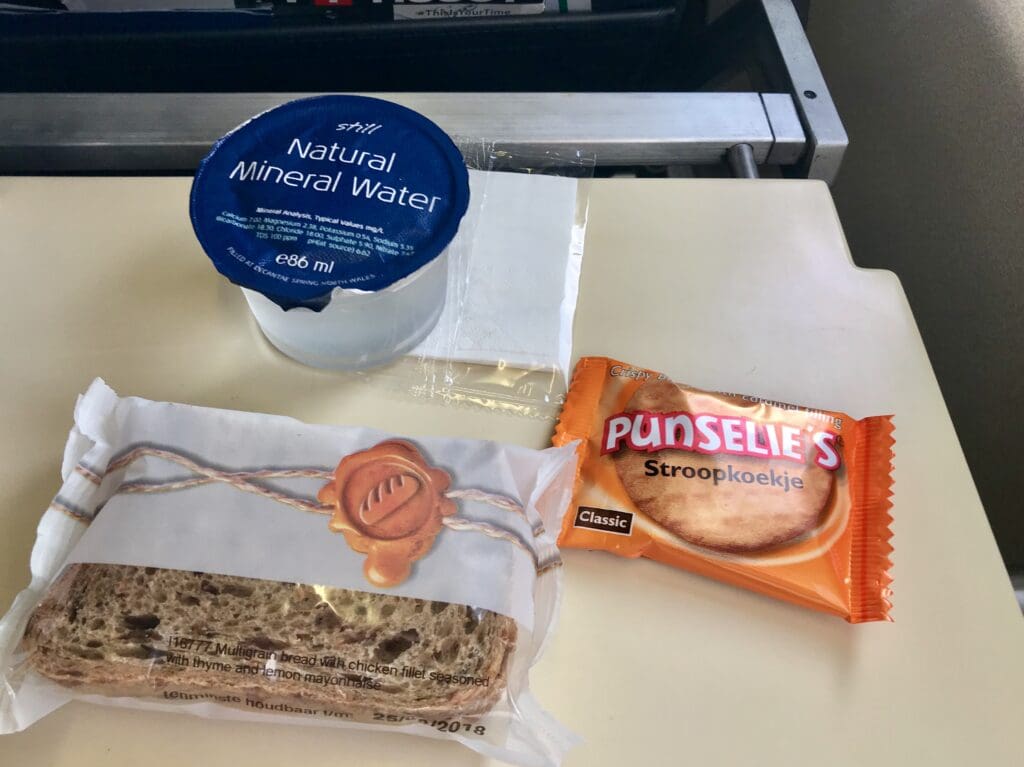
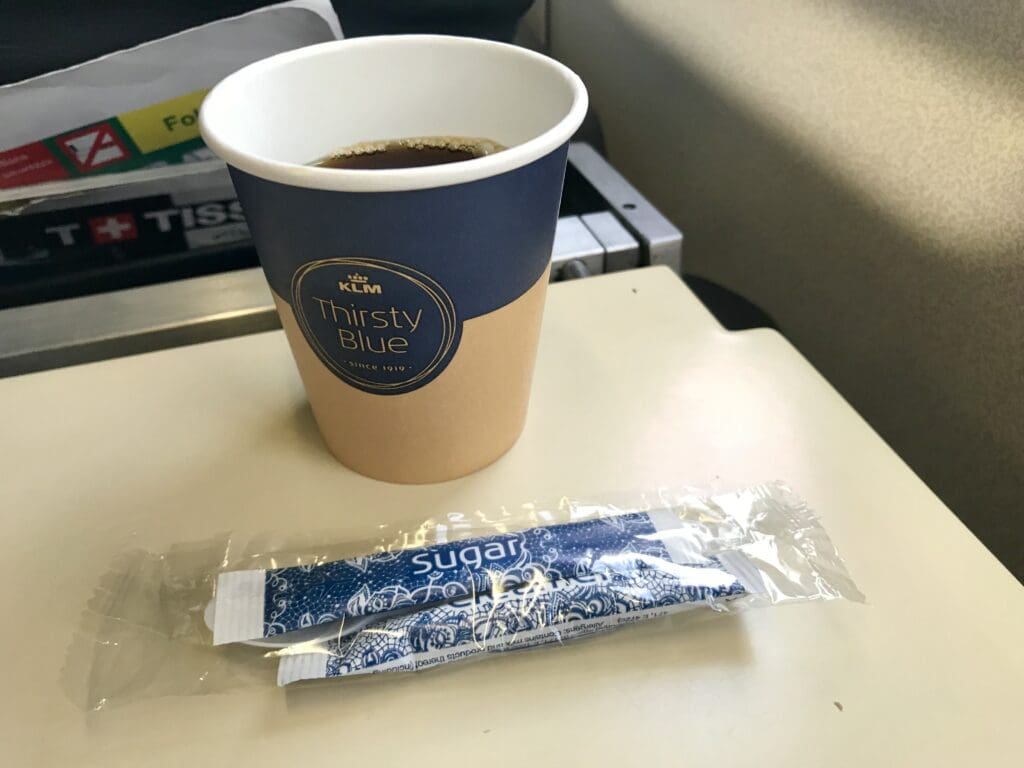
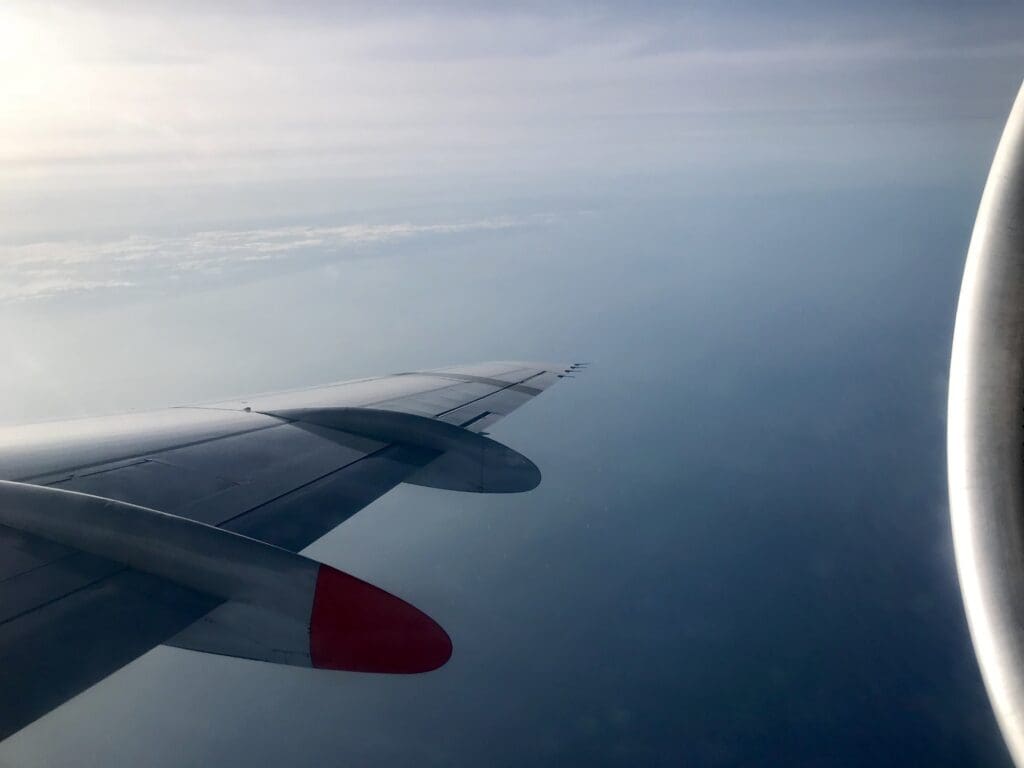
A little over twenty minutes into the flight, the aircraft levelled off at 32,000 feet and the clouds beneath the jet parted revealing the Suffolk coastline to the north. This also revealed one of KLM’s competitors on their routes between Amsterdam and the UK, Europe’s third largest ferry, the Stena Hollandica as it approached Harwich at the end of its North Sea crossing. As the aircraft trundled onwards, a minute or so later the Essex seaside town of Clacton-on-Sea, identifiable by its long pier also came into view before clouds came in once again. After maintaining 32,000 feet for all of a single minute, the level of engine noise decreased slightly and the aircraft began to pitch down, indicating the commencement of descent whilst the two flight attendants were in the middle of the drinks round. Upon reaching my row I requested a coffee which was carefully passed over to me before the rubbish collection service commenced. I have to say, whilst I have nothing but respect for the cabin crew who appeared to work efficiently and diligently, managing to serve all passengers, I cannot help but think that a third crew member was needed for this to be completed comfortably and allow passengers a reasonable amount of time to finish their drinks before the crew came round to collect the rubbish.

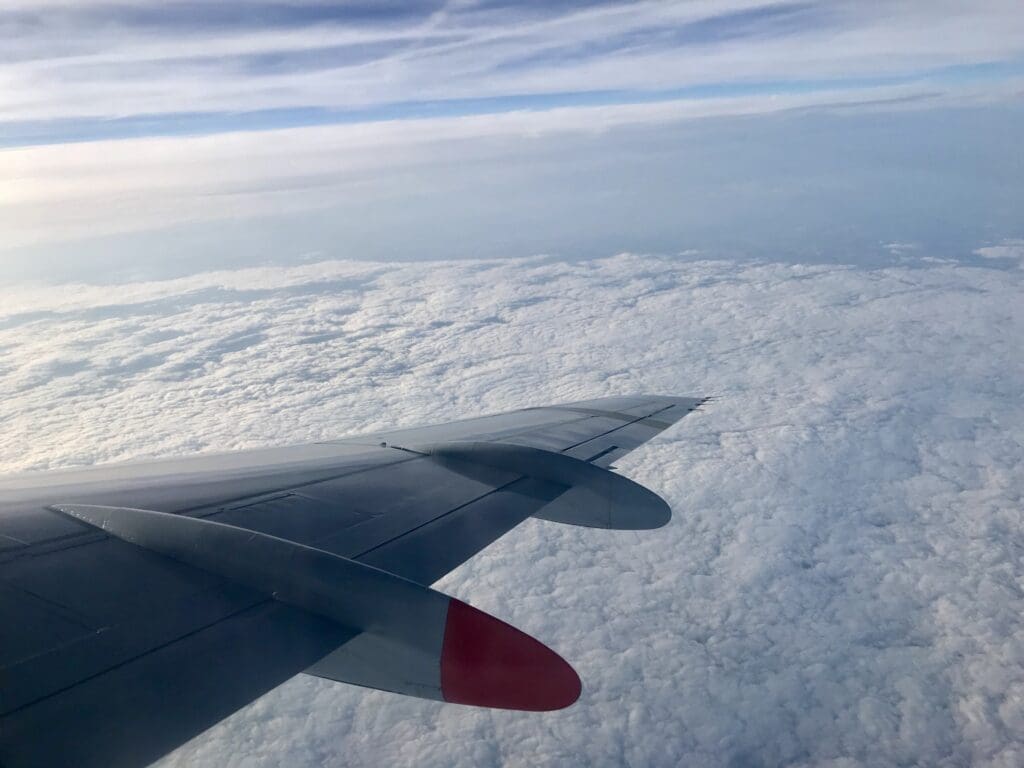
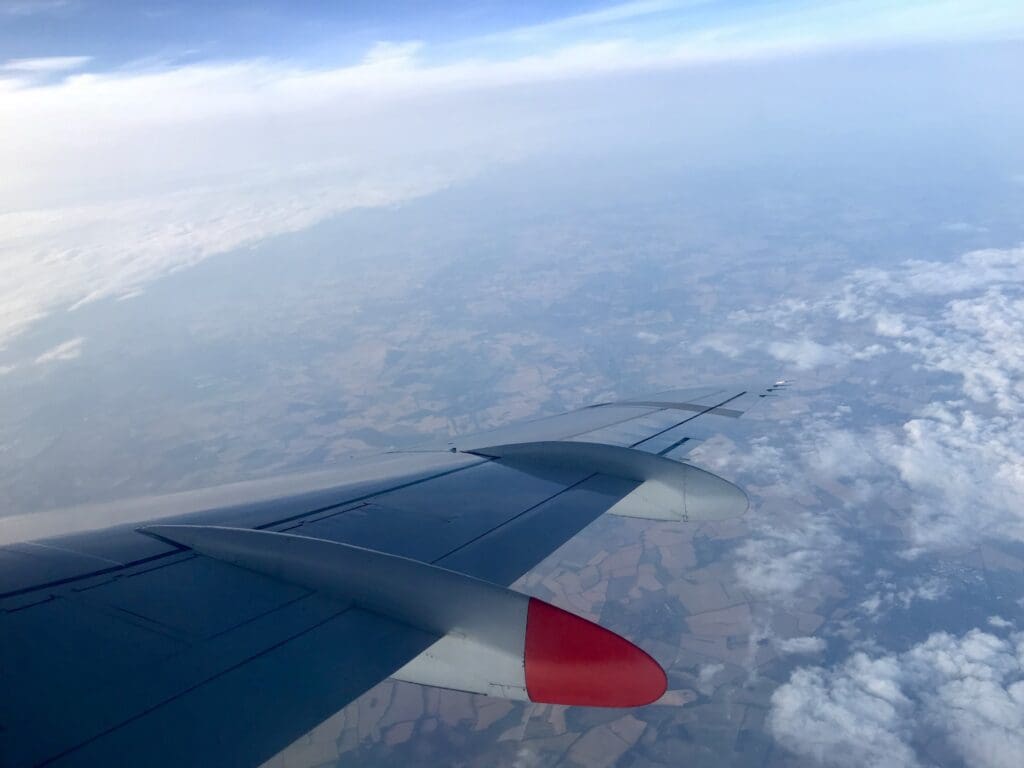
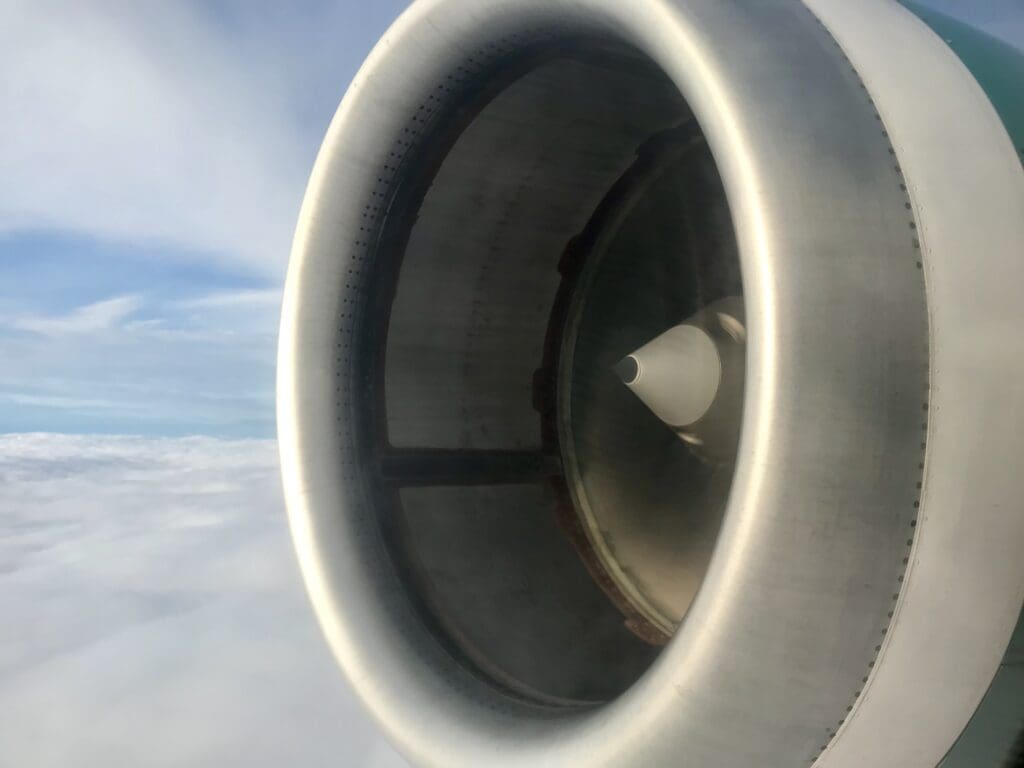
Once the remains of the meal service had been collected, the aircraft had already made its slow and gentle turn northwards to the Midlands and one of the pilots made the usual ‘twenty minutes to landing’ announcement as the jet descended through 15,000 feet. Outside a small break in the clouds allowed those on the right side of the aircraft views of Bedford and the green fields that surround the town. After this, the clouds once again blocked any views of the scenery below before the Fokker made a turn directly westwards just to the north of Northampton as it slowly edged lower towards the tops of the clouds before sinking into these at 1855 at an altitude of around 4000 feet.
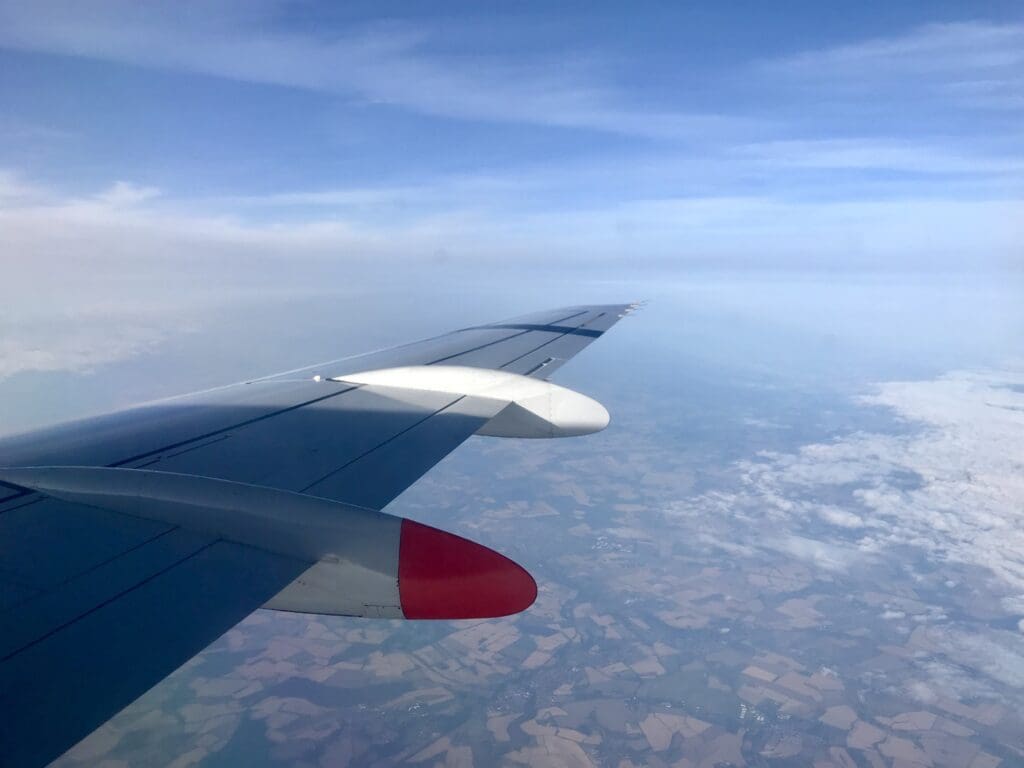
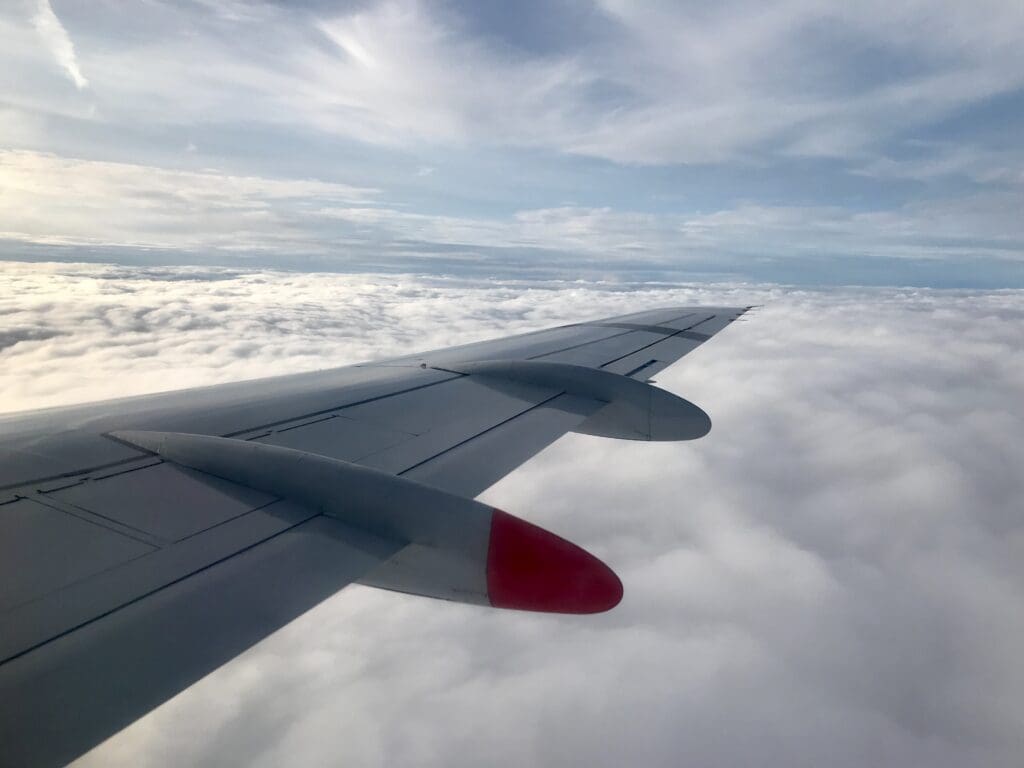
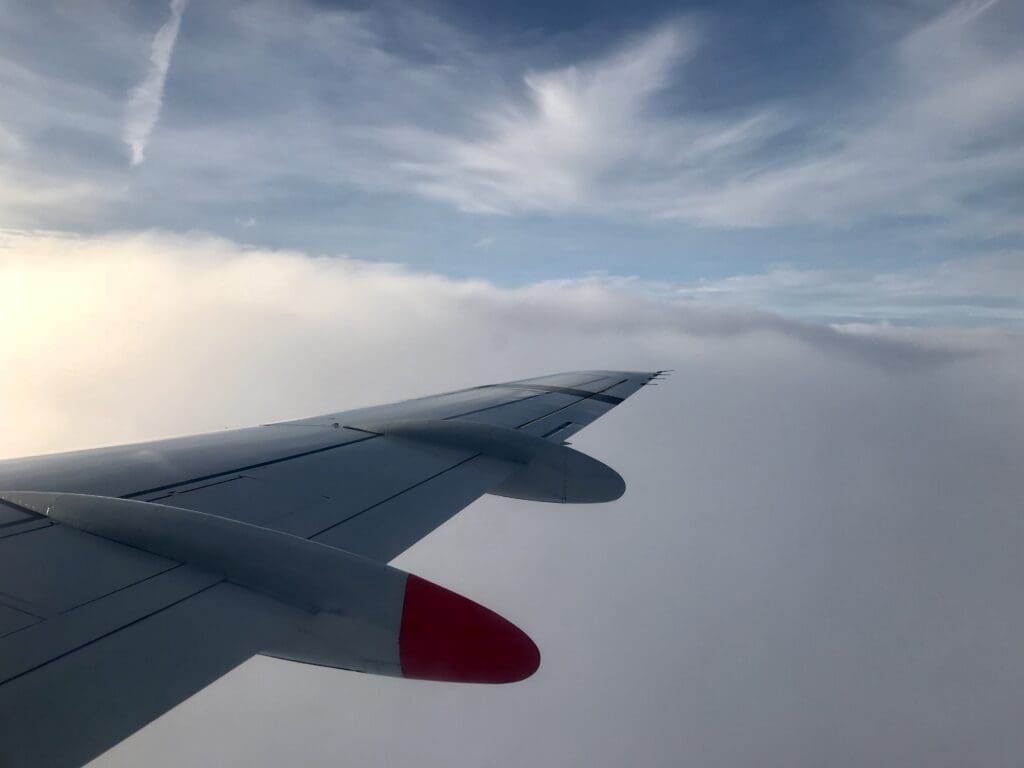
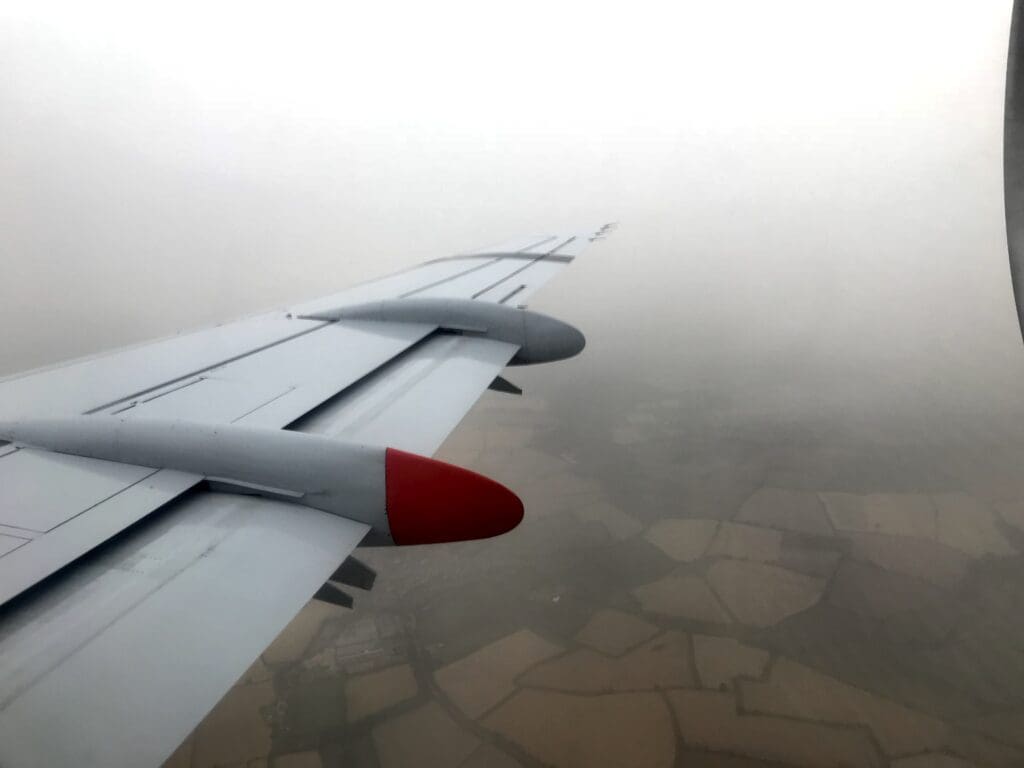
Following a calm slicing through the clouds, the fields and villages in between Leamington Spa to the south and Coventry to the north came into view whilst the aircraft shuddered a little as the airbrakes were deployed. From there the aircraft continued heading northwards on its approach to Birmingham Airport’s Runway 33. During this stage of the flight, Coventry and its large but quiet airport could be seen before the flaps and landing gear were extended.
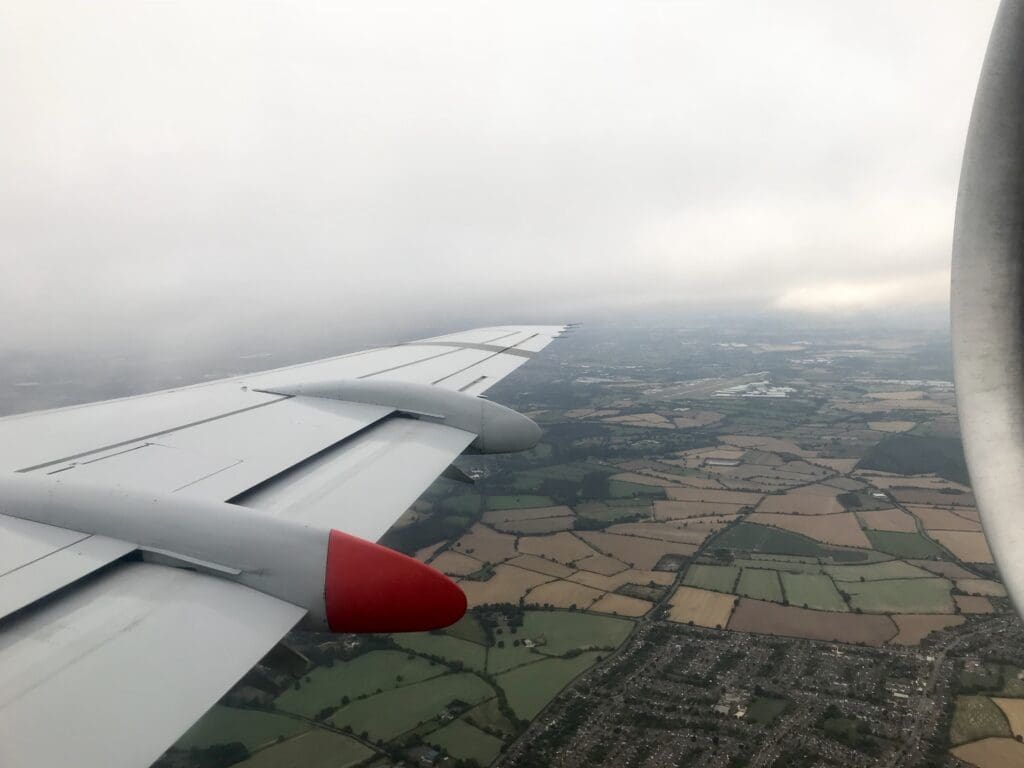
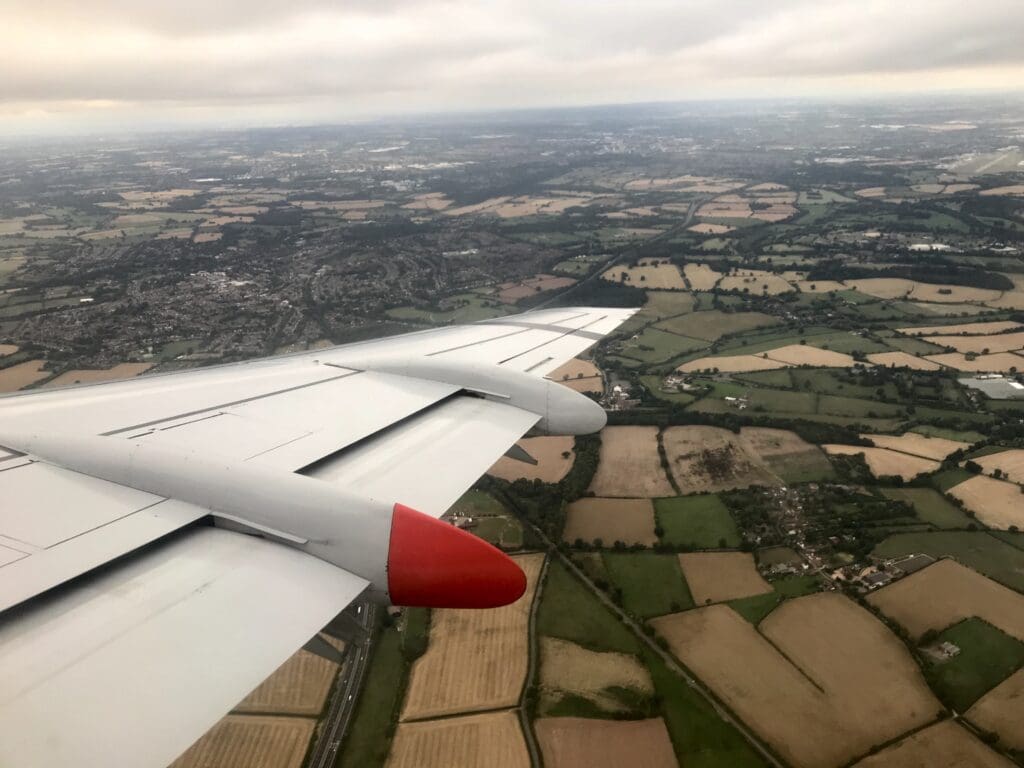
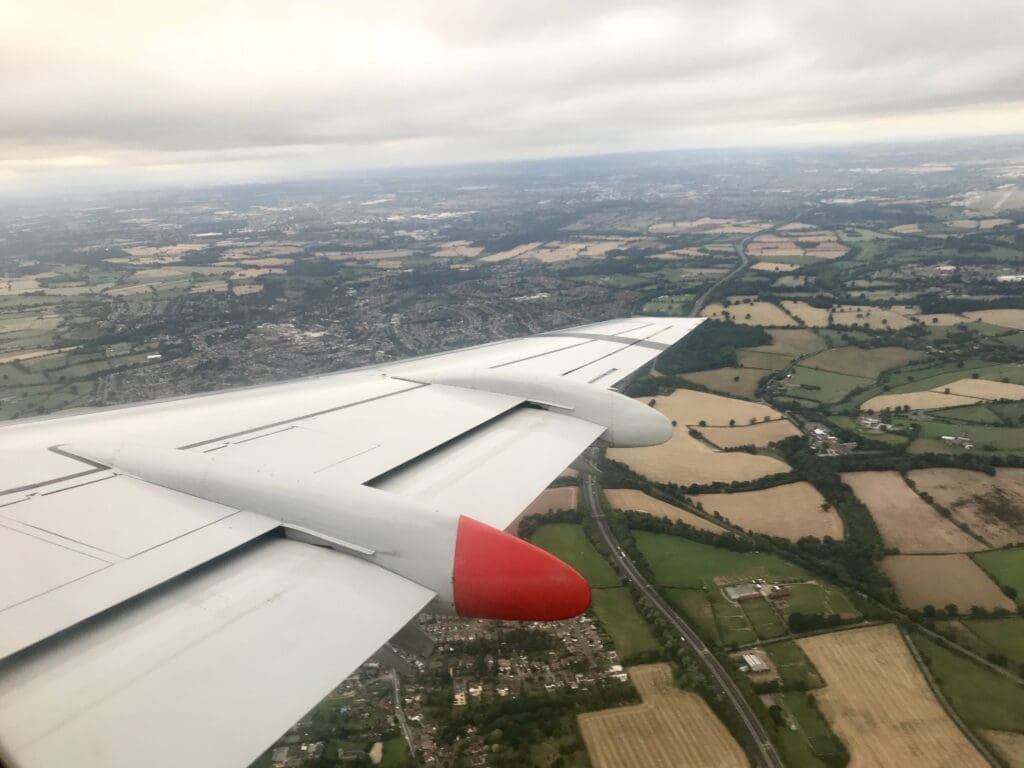
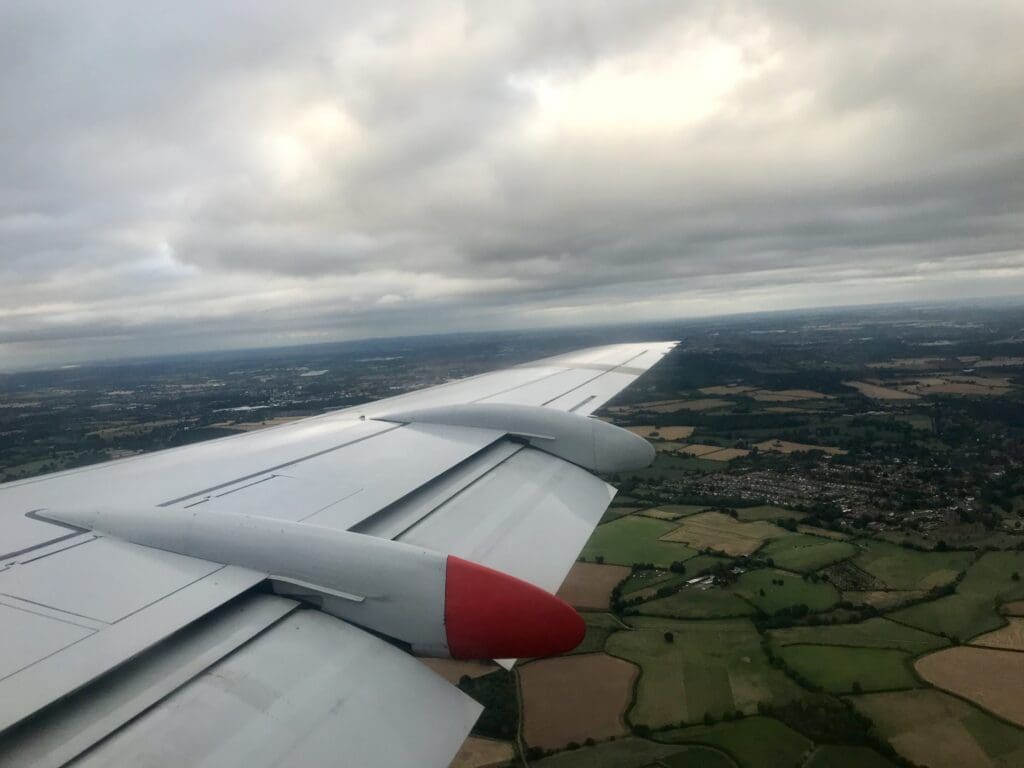
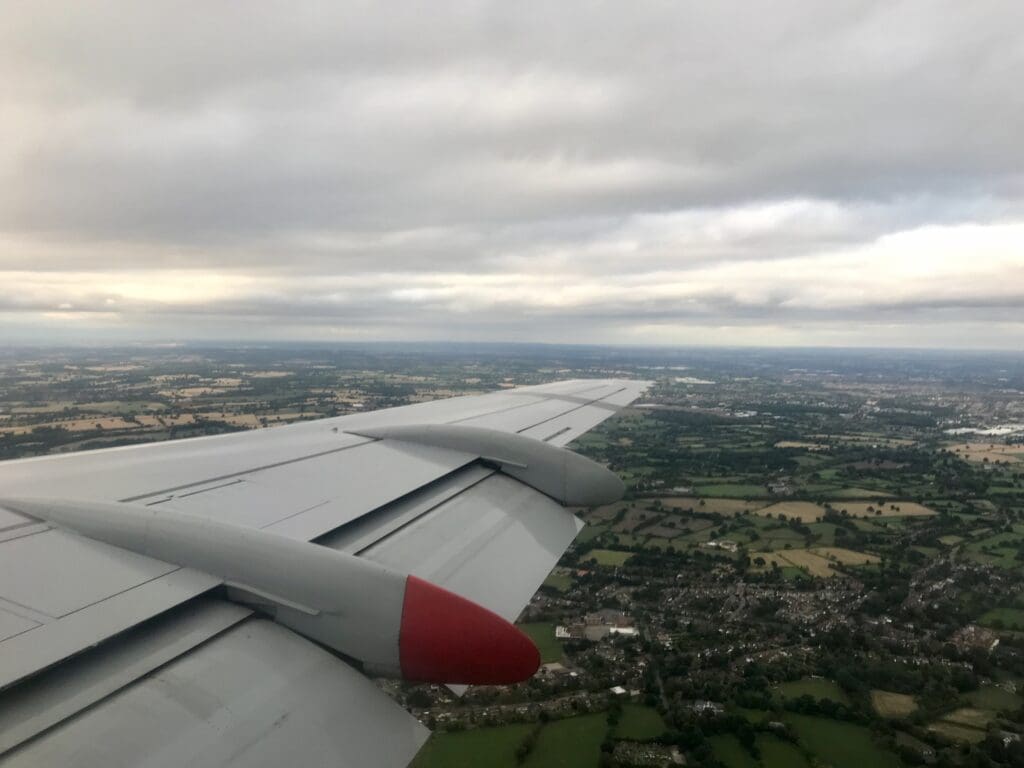
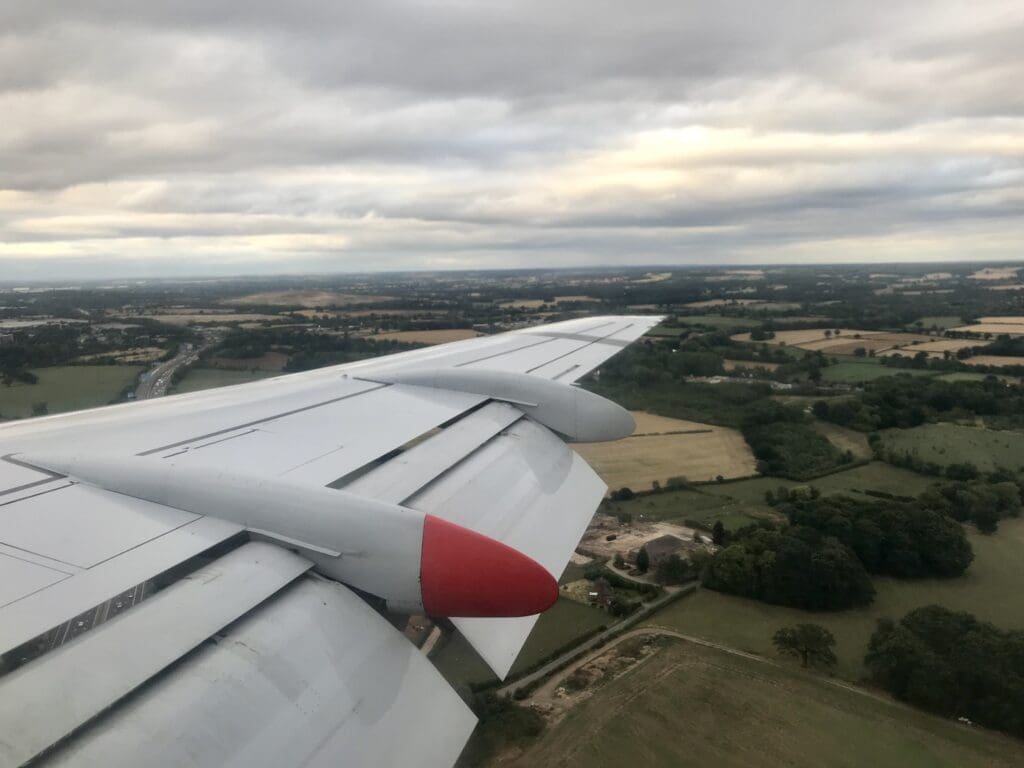
A couple of minutes later, the Fokker 100 floated down over the M42 motorway, the airport’s perimeter fence and threshold of the runway, passing a Frankfurt-bound Lufthansa Airbus A321 before ending the smooth flight with a bumpy touchdown. This was followed by the roar of the reverse thrust and the deployment of the Fokker’s large wing spoilers as well as some very gentle braking which seemed to be steadily increased as the aircraft ploughed down the runway indicating the pilots’ realisation that the runway was not to go on forever! Eventually, the aircraft exited the runway at its second-to-last turn-off and made its way over to the terminal.
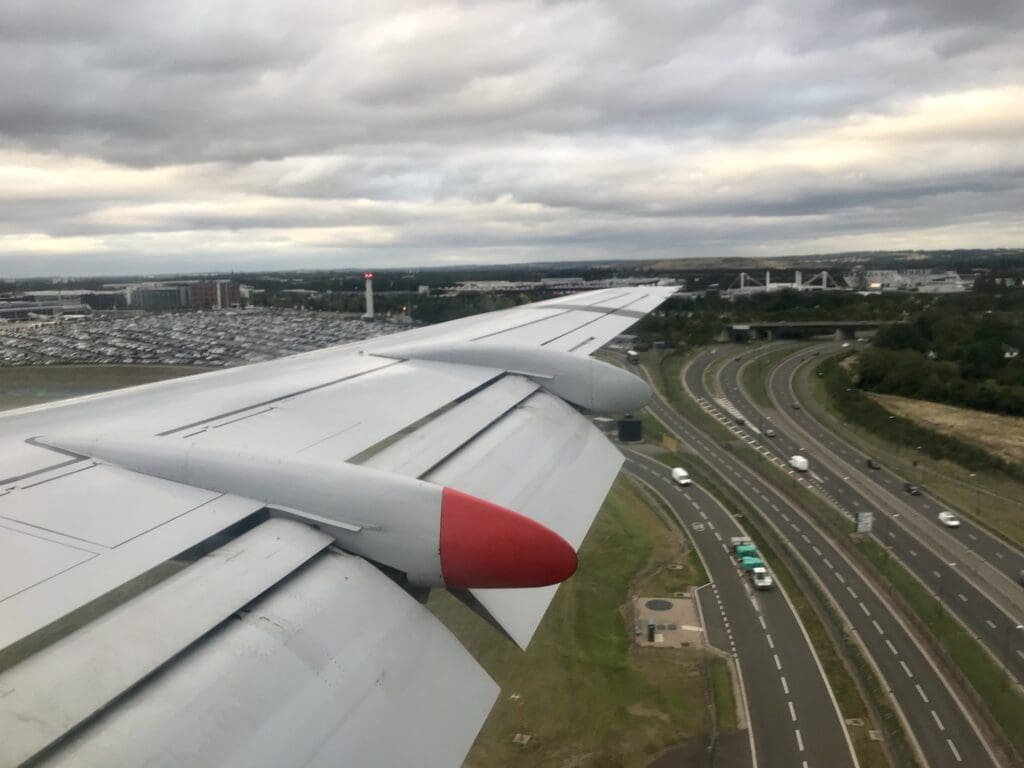
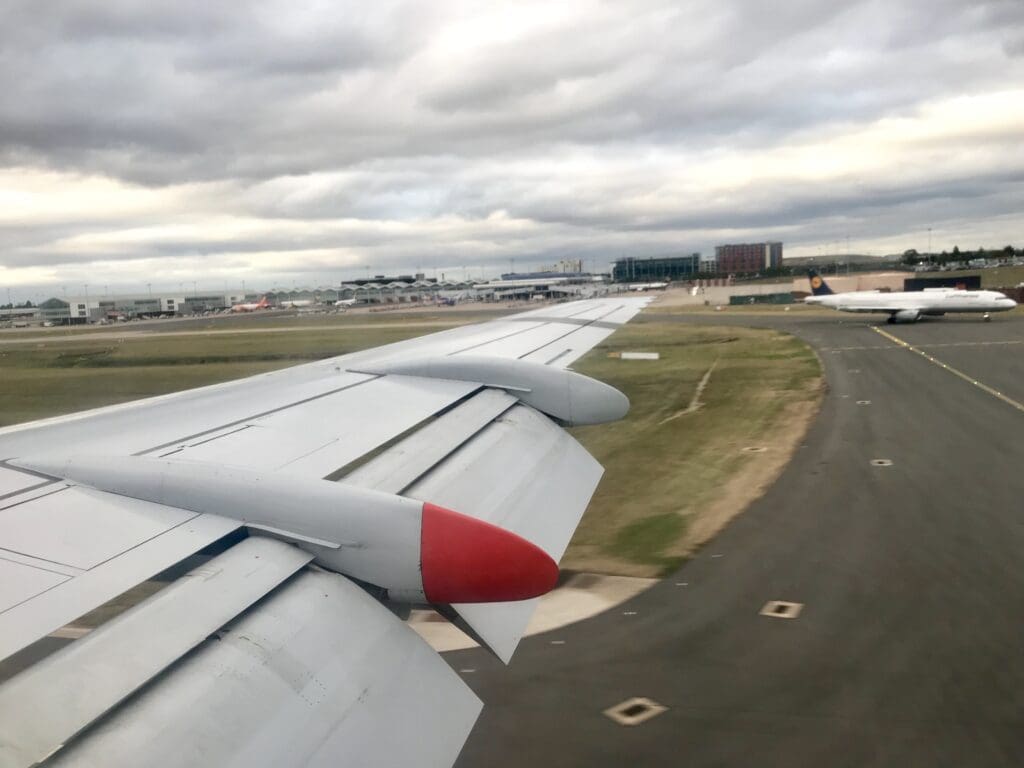
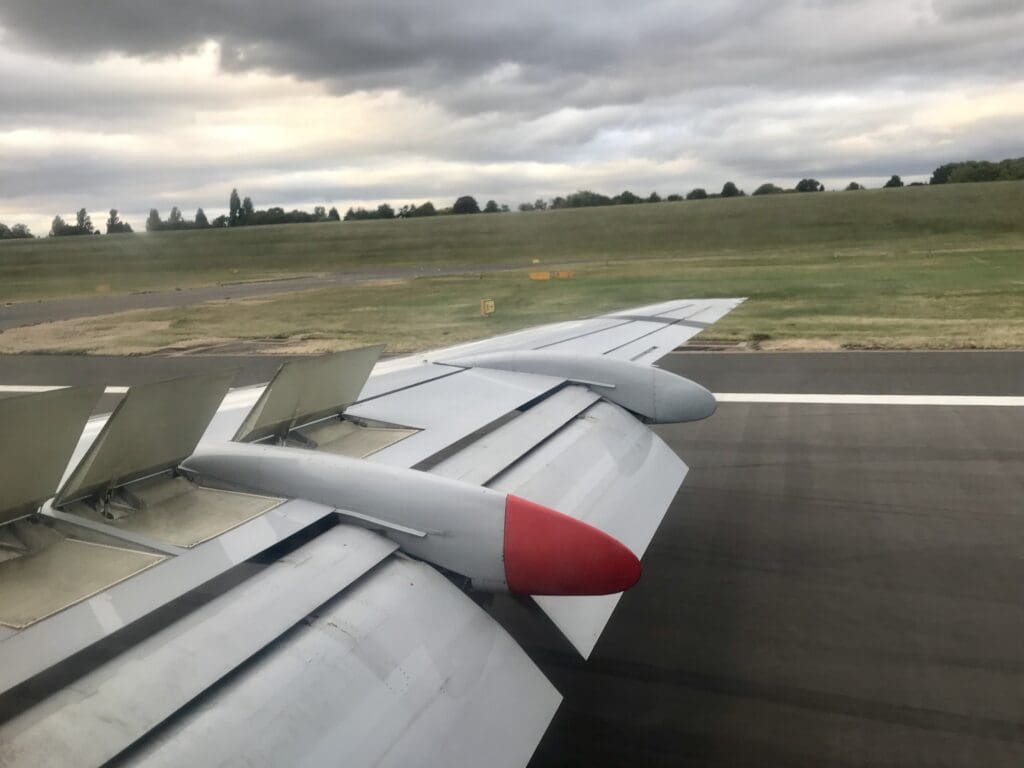
Whilst Birmingham is most certainly not the busiest airport in the UK, it does frequently play host to a range of interesting aircraft. That evening the highlight of these came in the form of a colourful Gulfstream 550 registered in the United Arab Emirates. Following a short taxi, the aircraft pulled into Stand 58 joining Air India’s oldest Boeing 787 which had recently arrived from Delhi. Soon enough, the engines powered down plunging the aircraft into a near silence which was followed by the jumping up of passengers seemingly desperate to get off the aircraft. With plenty of time before my train back to Sheffield, I was not in any major rush and savoured my last few minutes onboard the vintage Fokker 100. Given a slight delay in the attachment of the jetbridge, disembarkation did not commence until around five minutes after the aircraft had arrived at the gate.
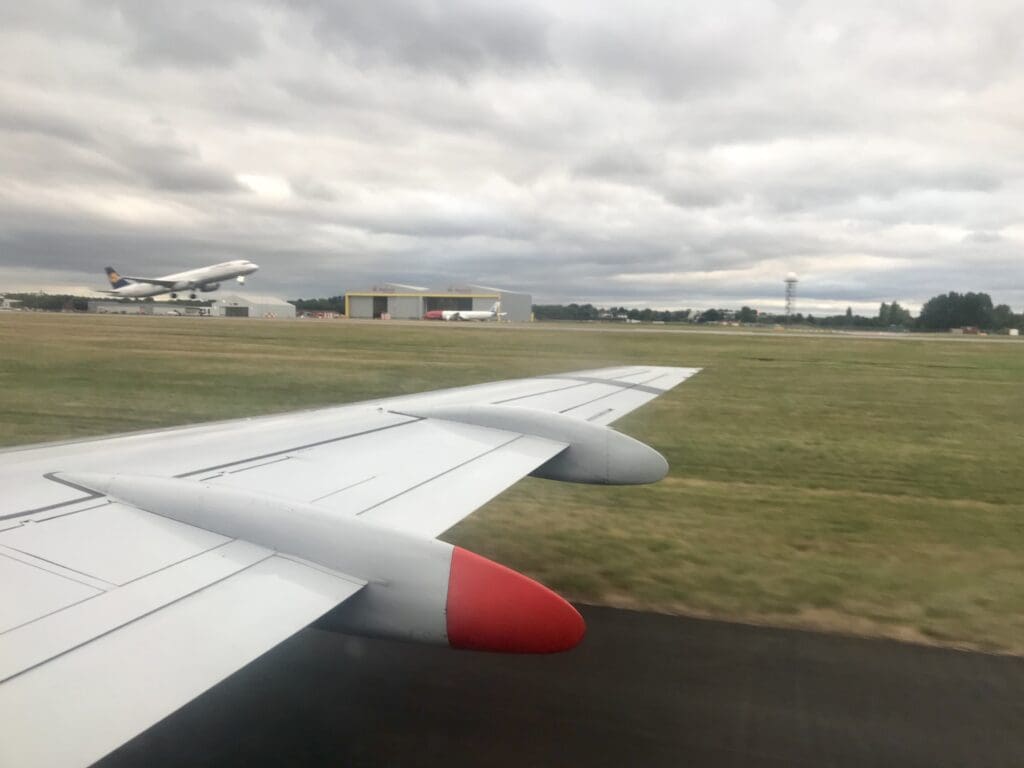
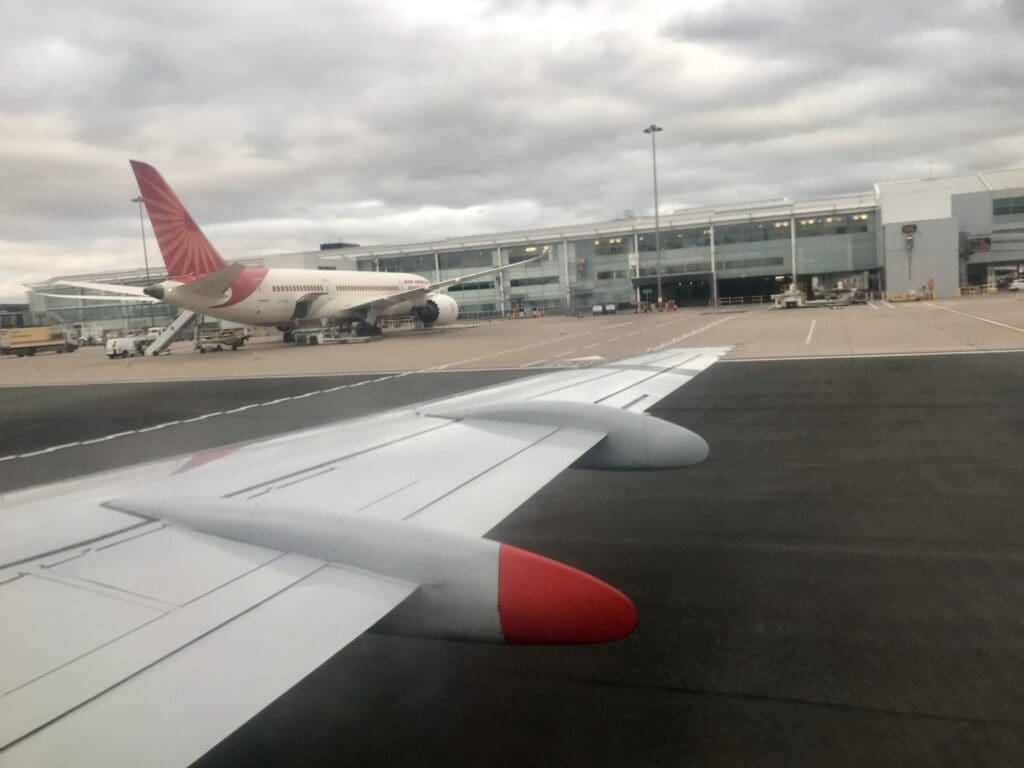
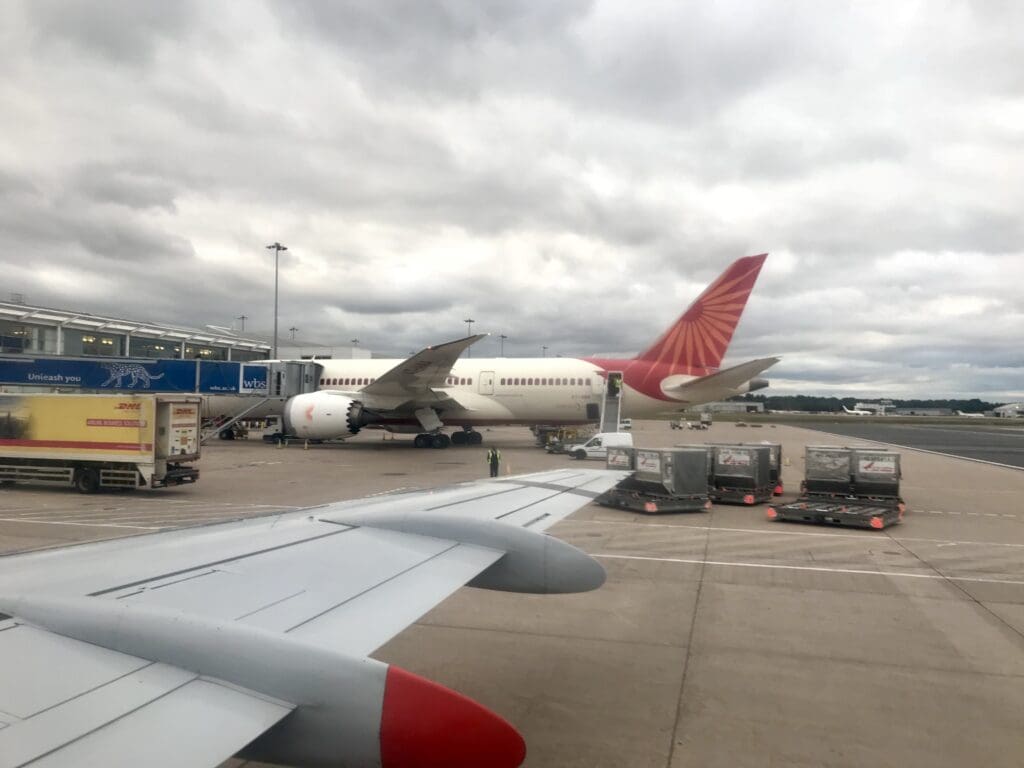
Once out of my seat, I thanked the cabin crew member who was standing several rows behind me before heading to the front of the aircraft where I thanked the Purser and headed up the jetbridge. From the aircraft’s arrival gate, a reasonable walk to immigration was required although upon arriving there, this was relatively quiet and so I was able to head over to an automated gate after no more than a minute of waiting.
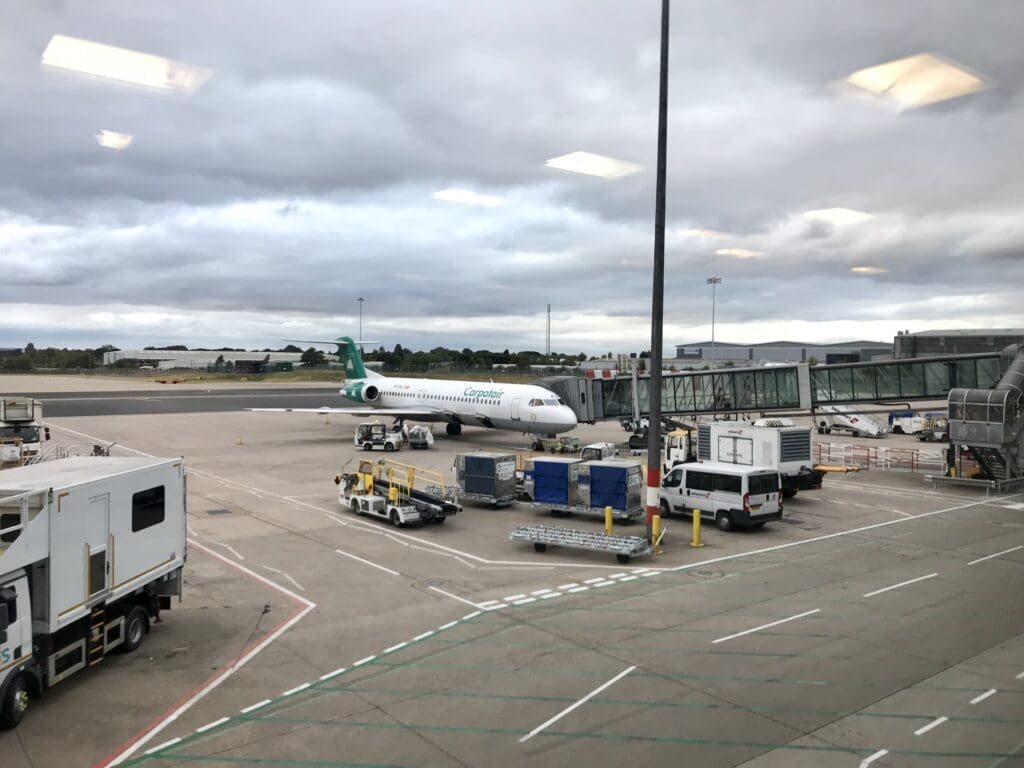
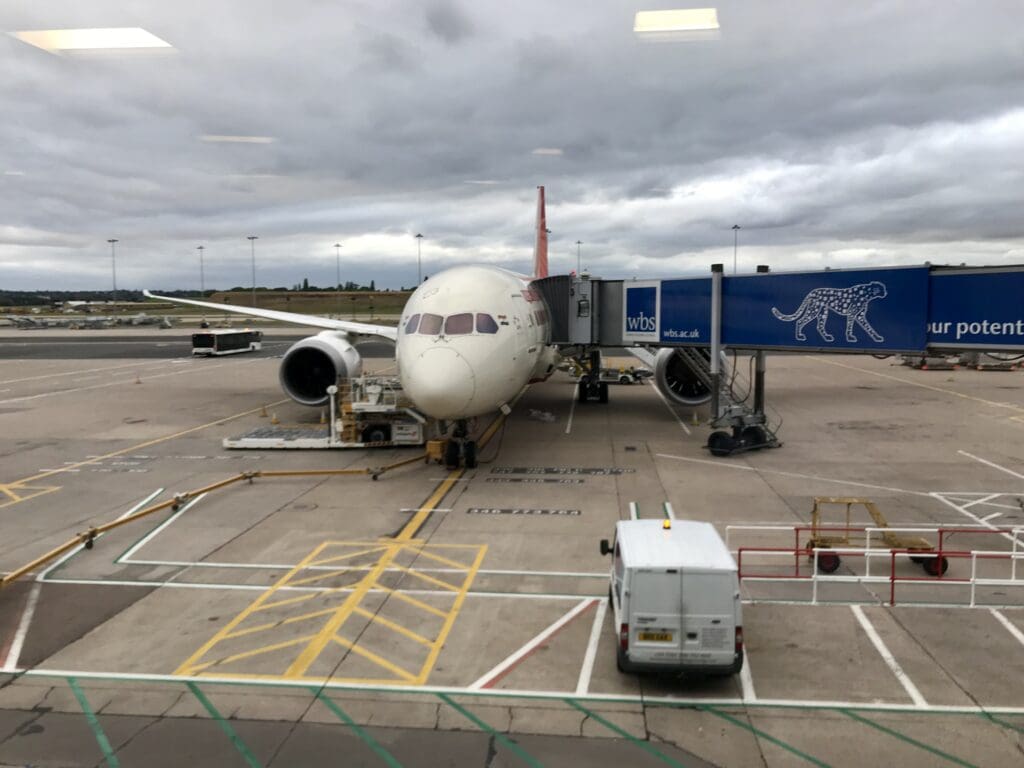
Summary
Whilst I had chosen to fly this service owing to the fact that a rare Fokker 100 was scheduled to operate this, my experience with Carpatair was largely positive and whilst I may well not be likely to fly with the carrier again, I would not hesitate to book on another flight operated by the airline.

